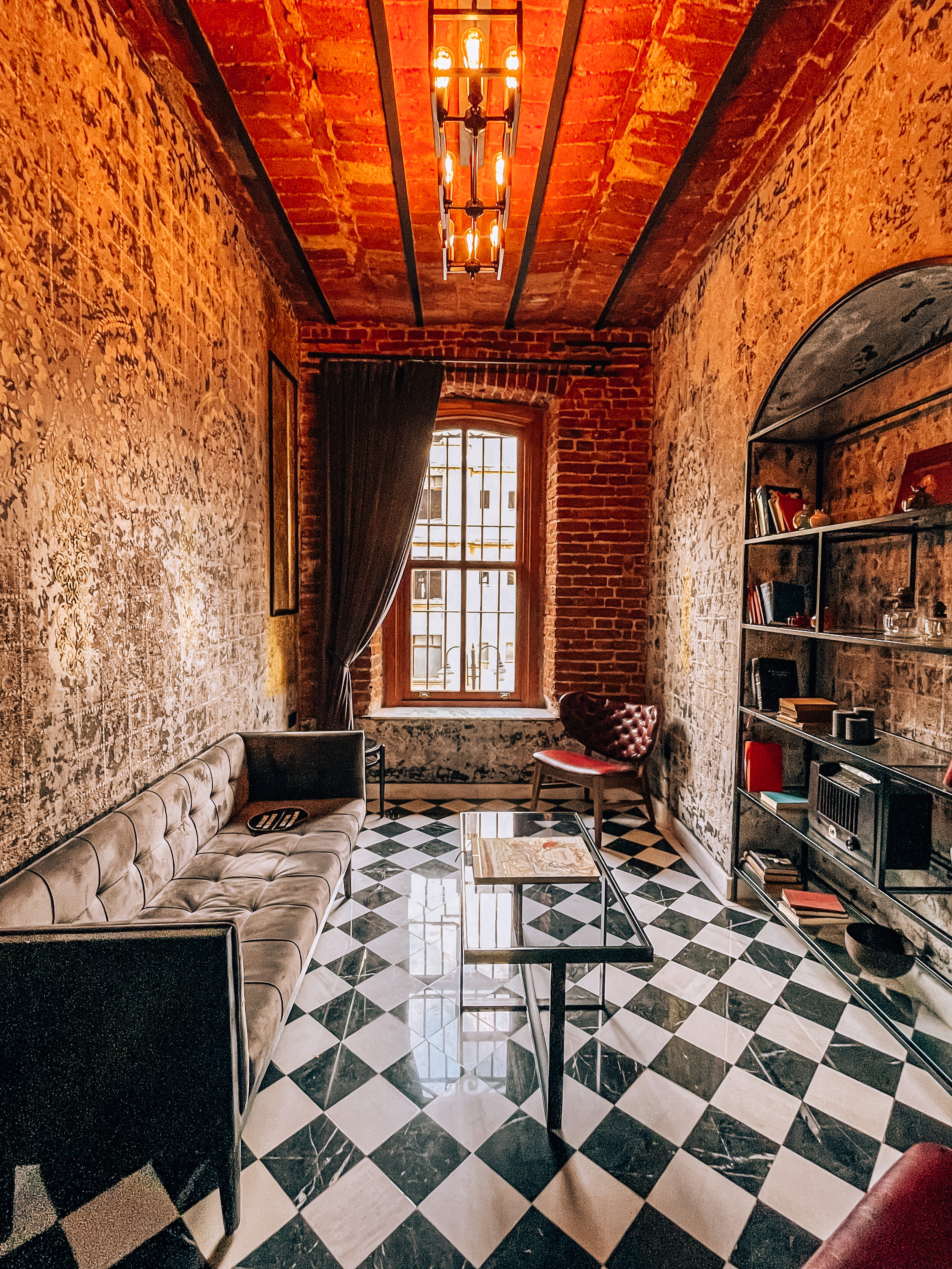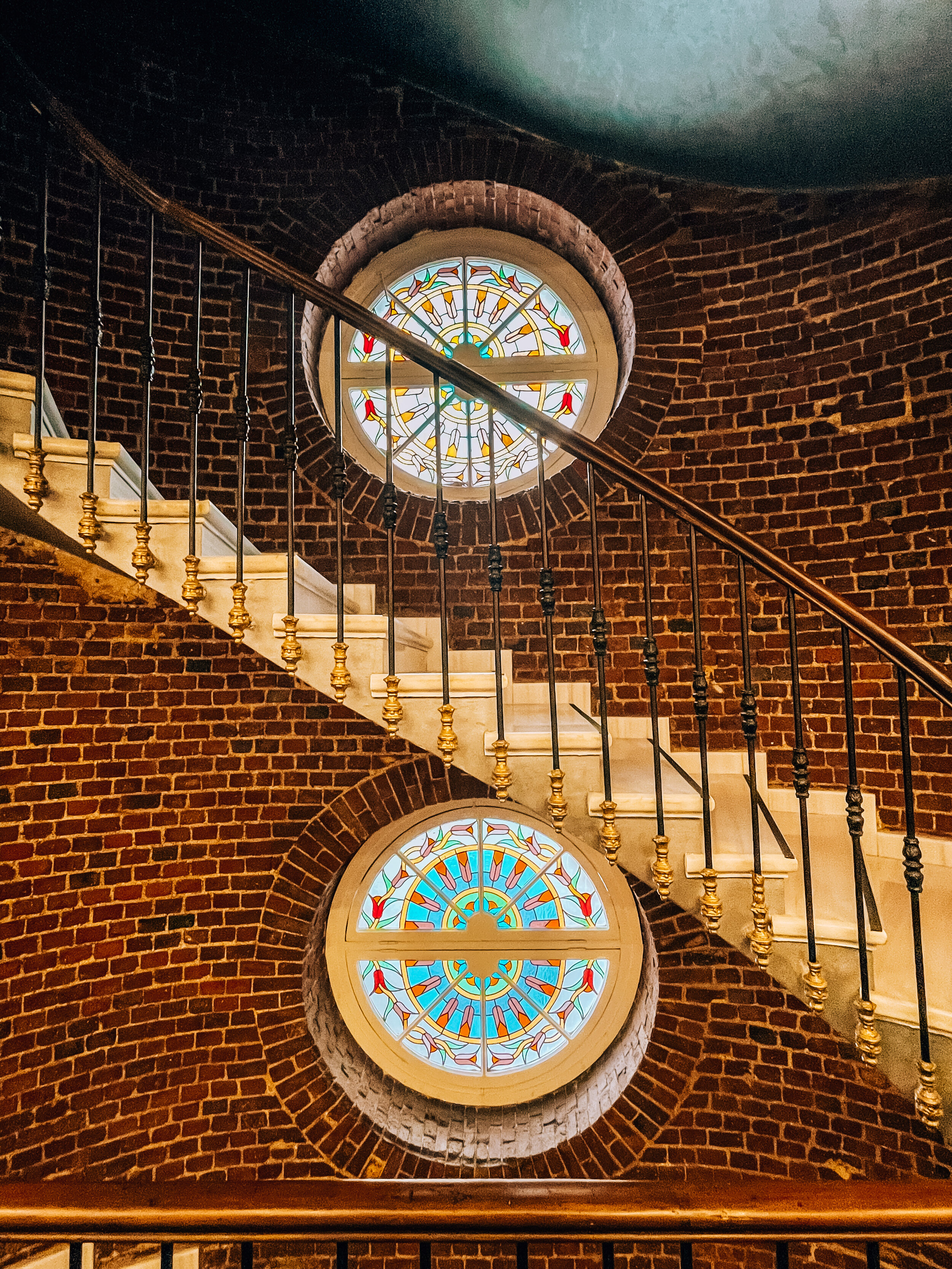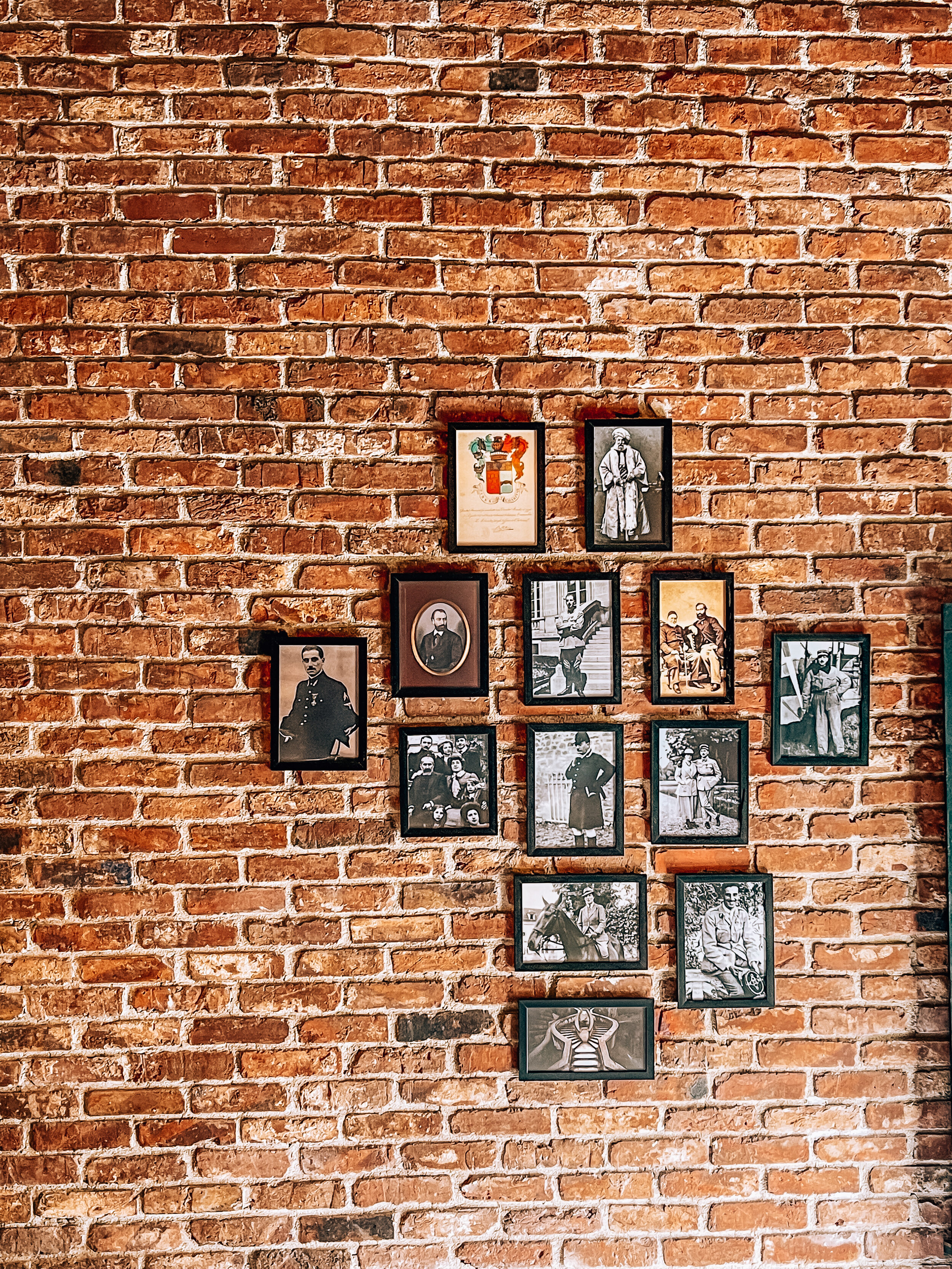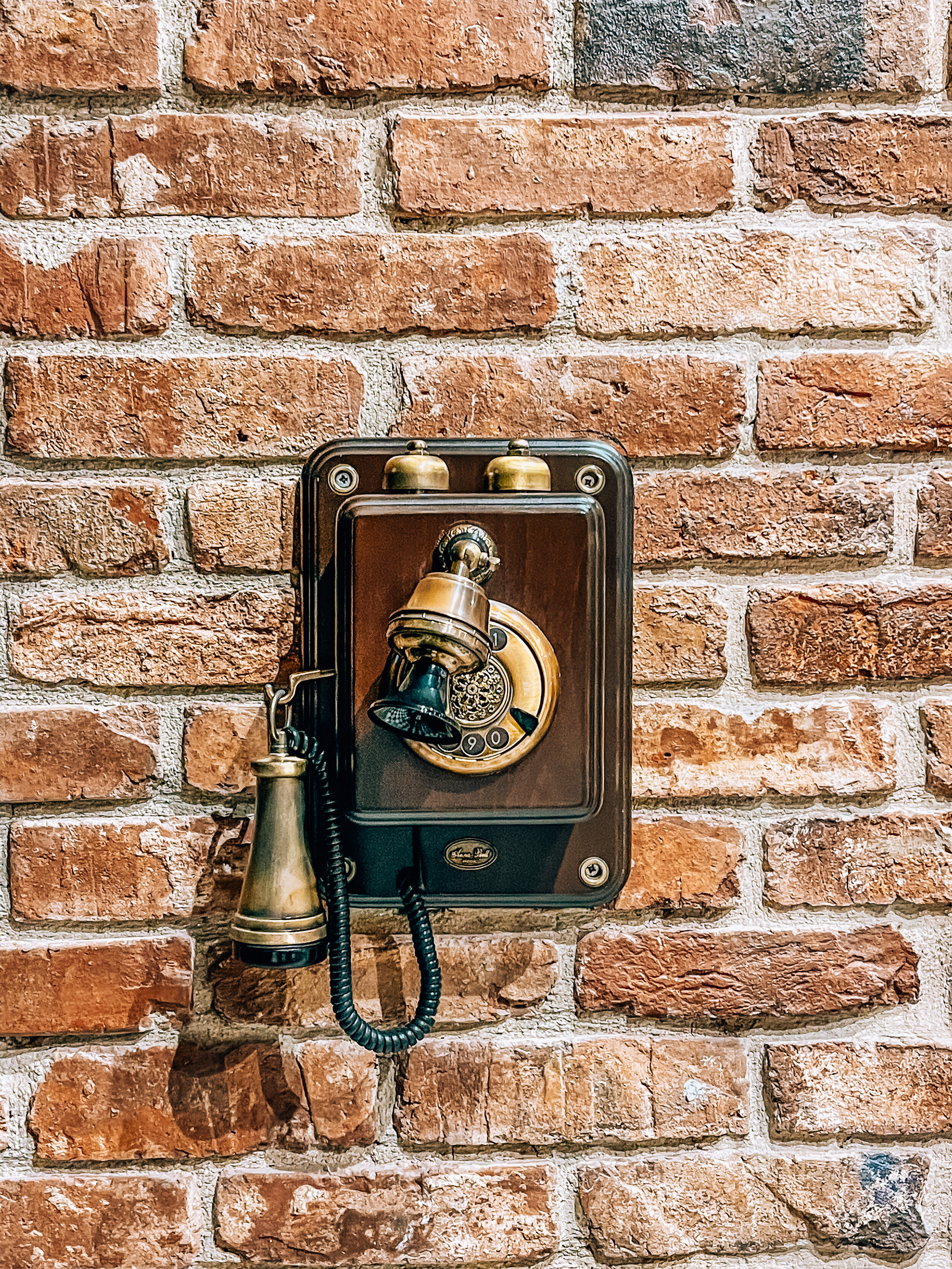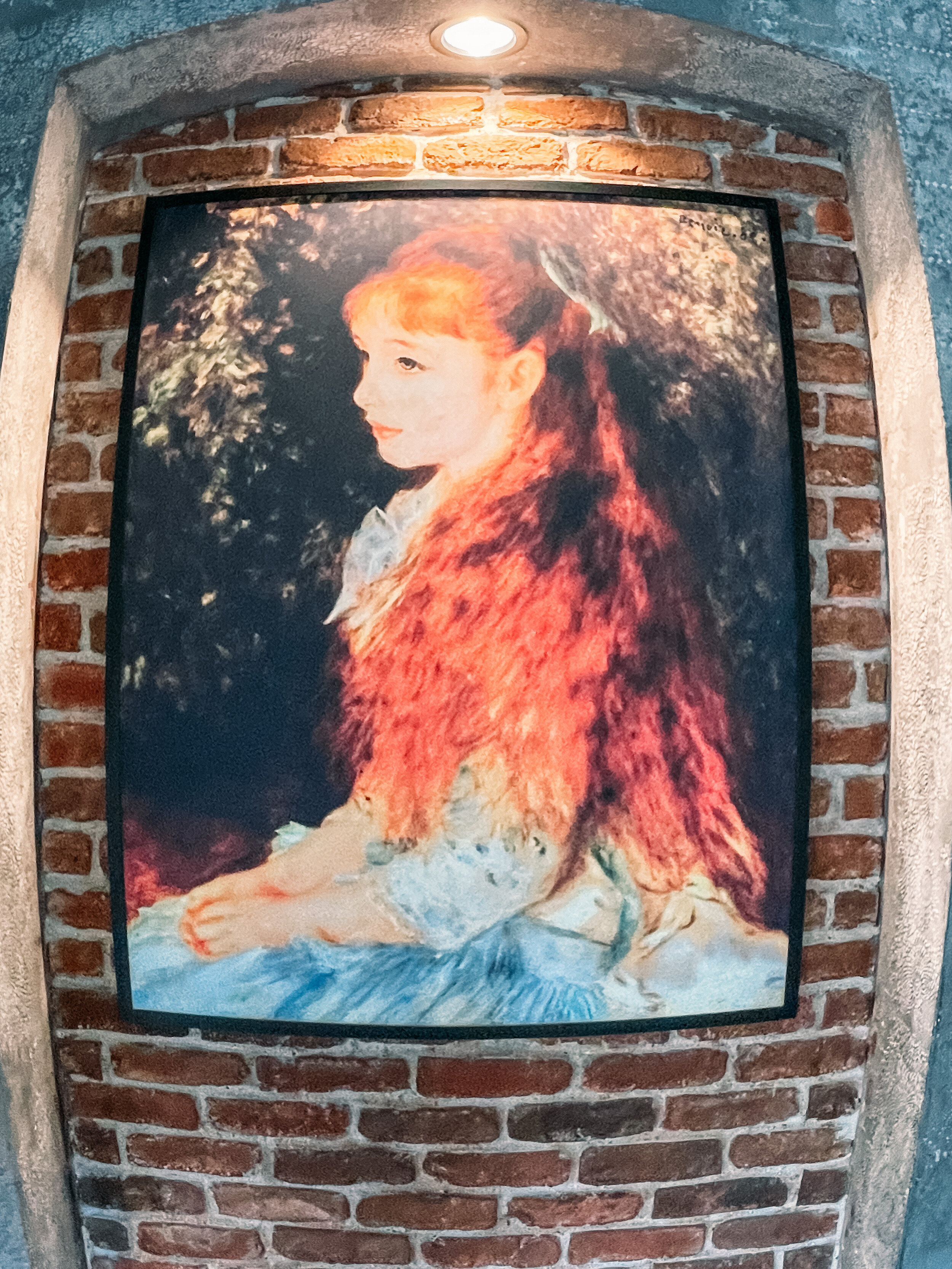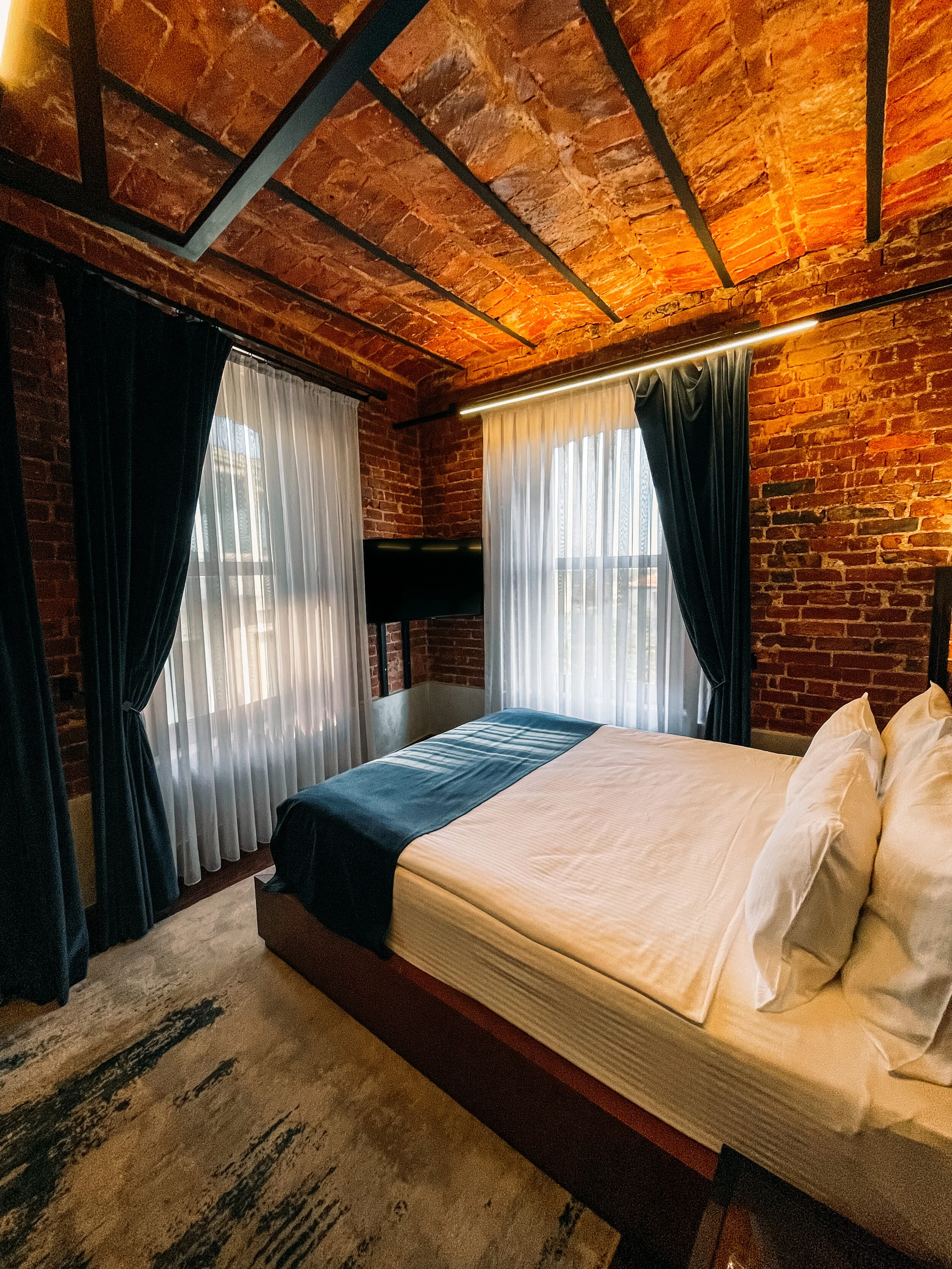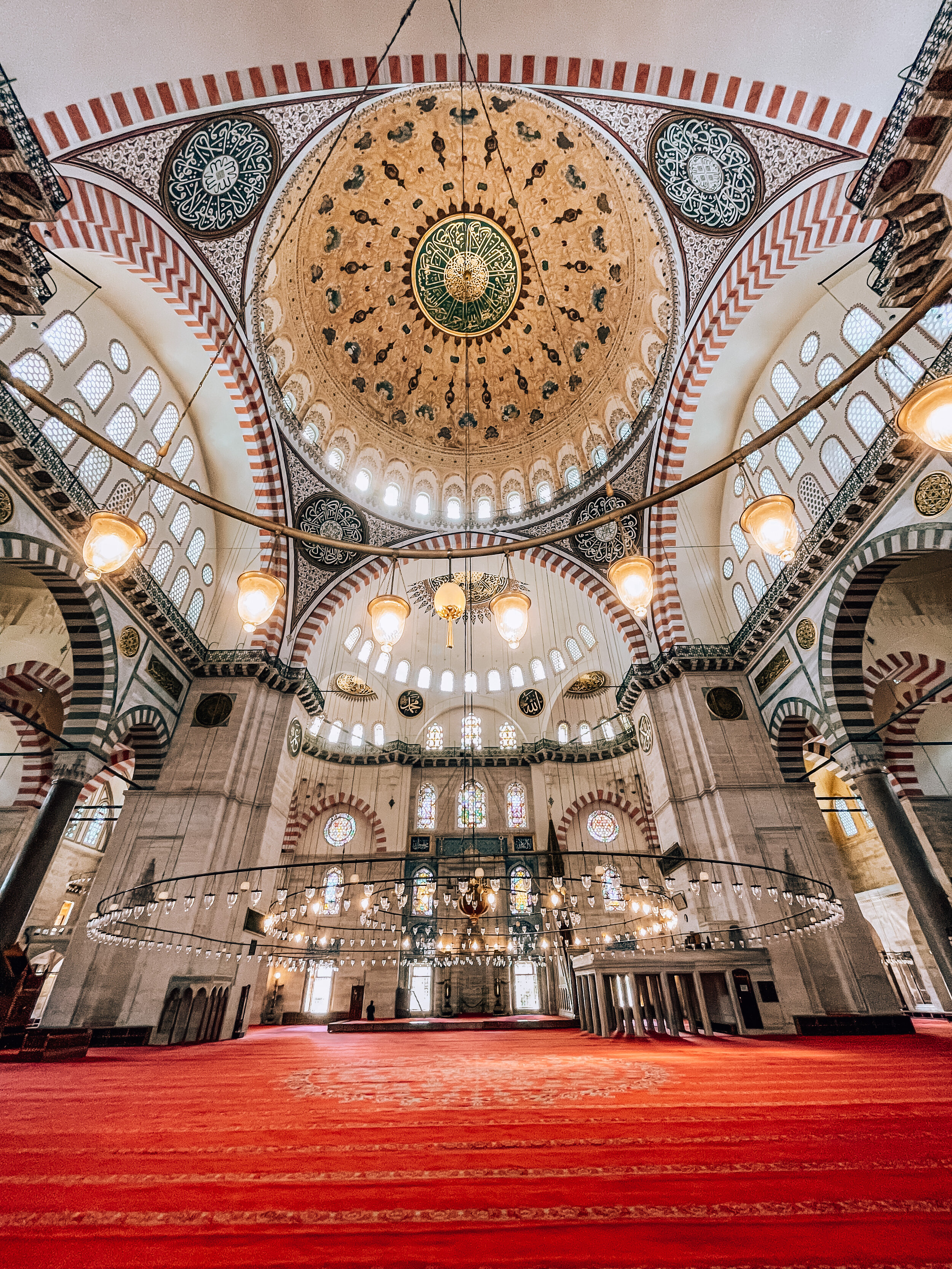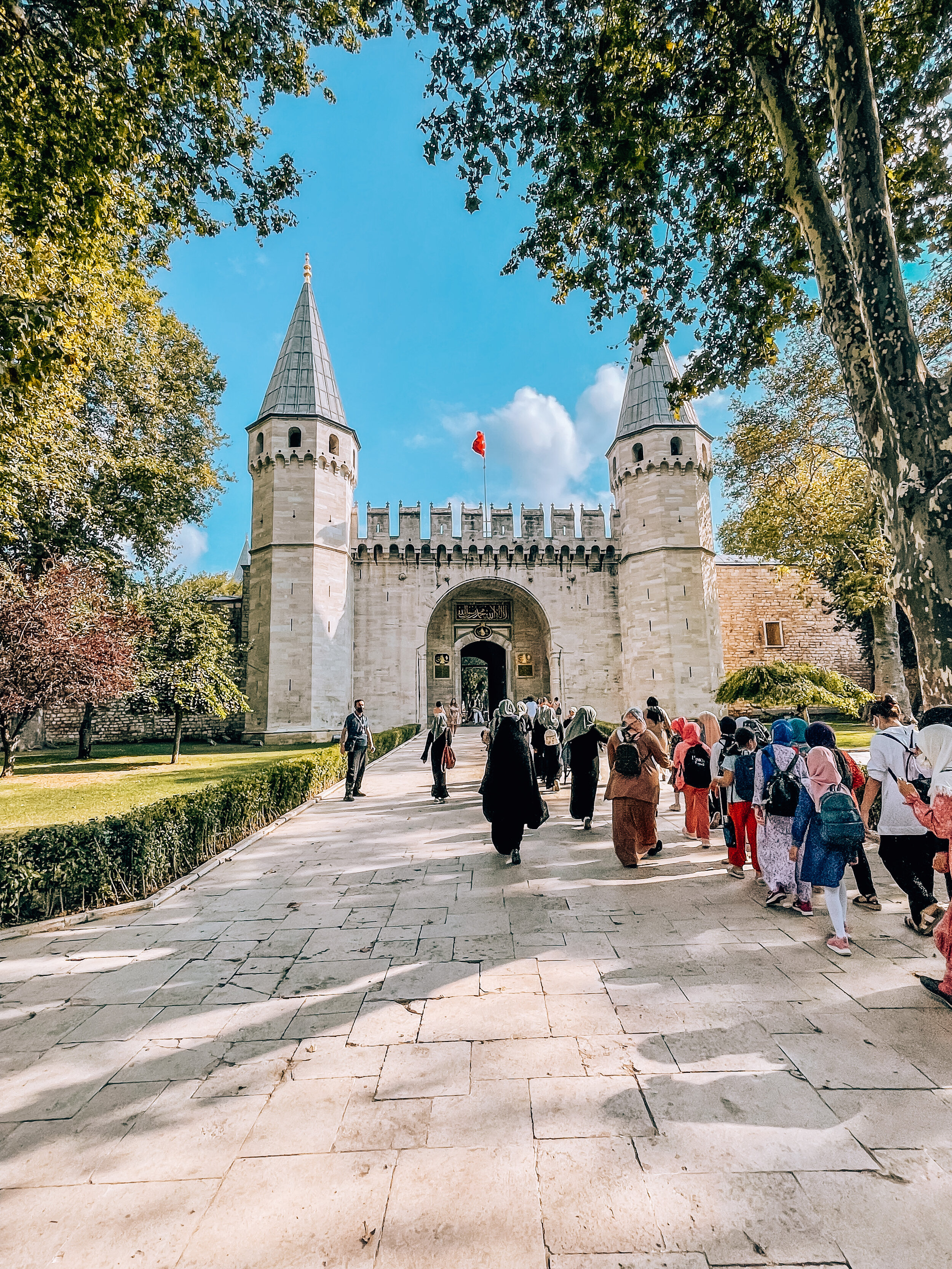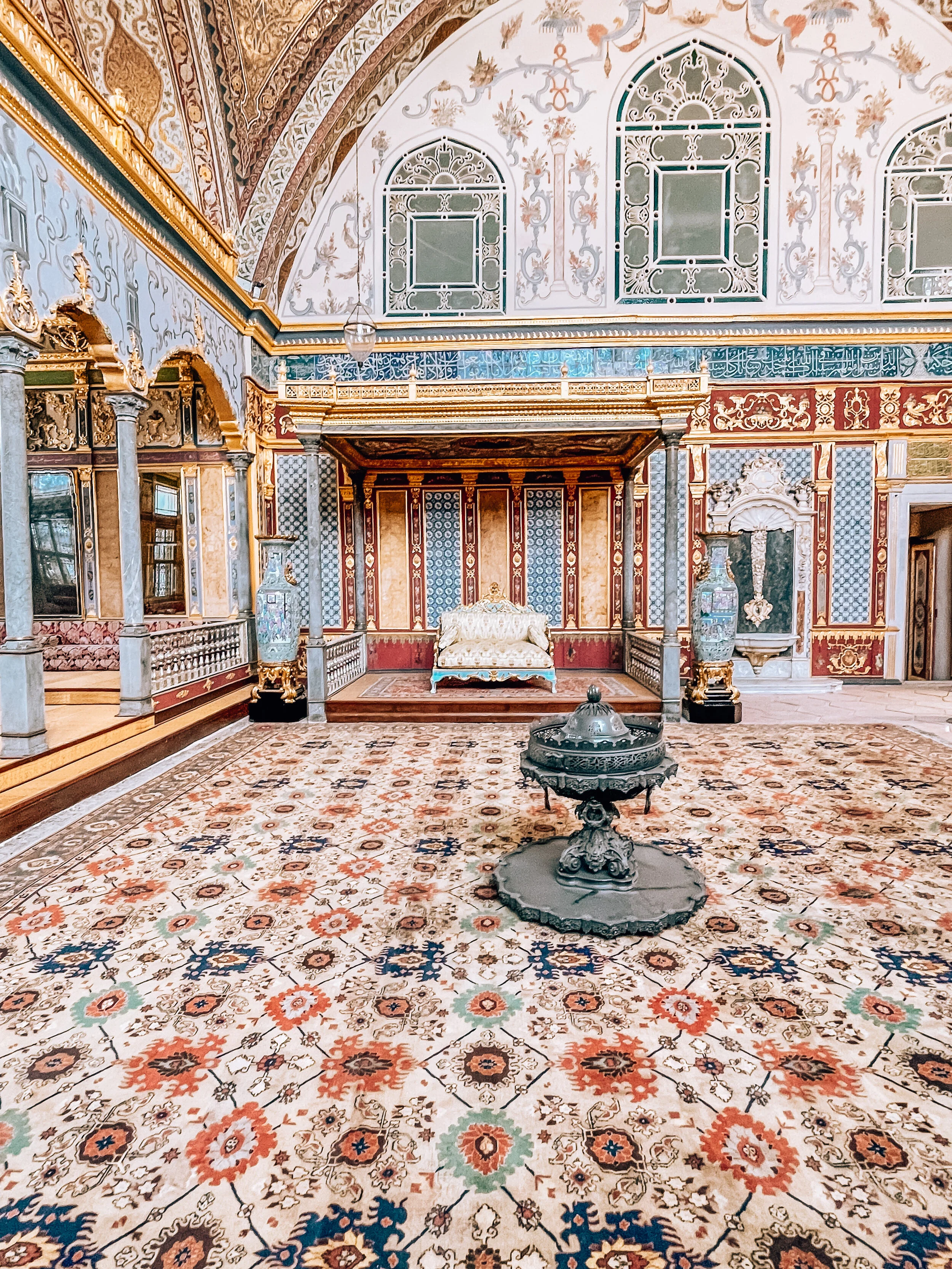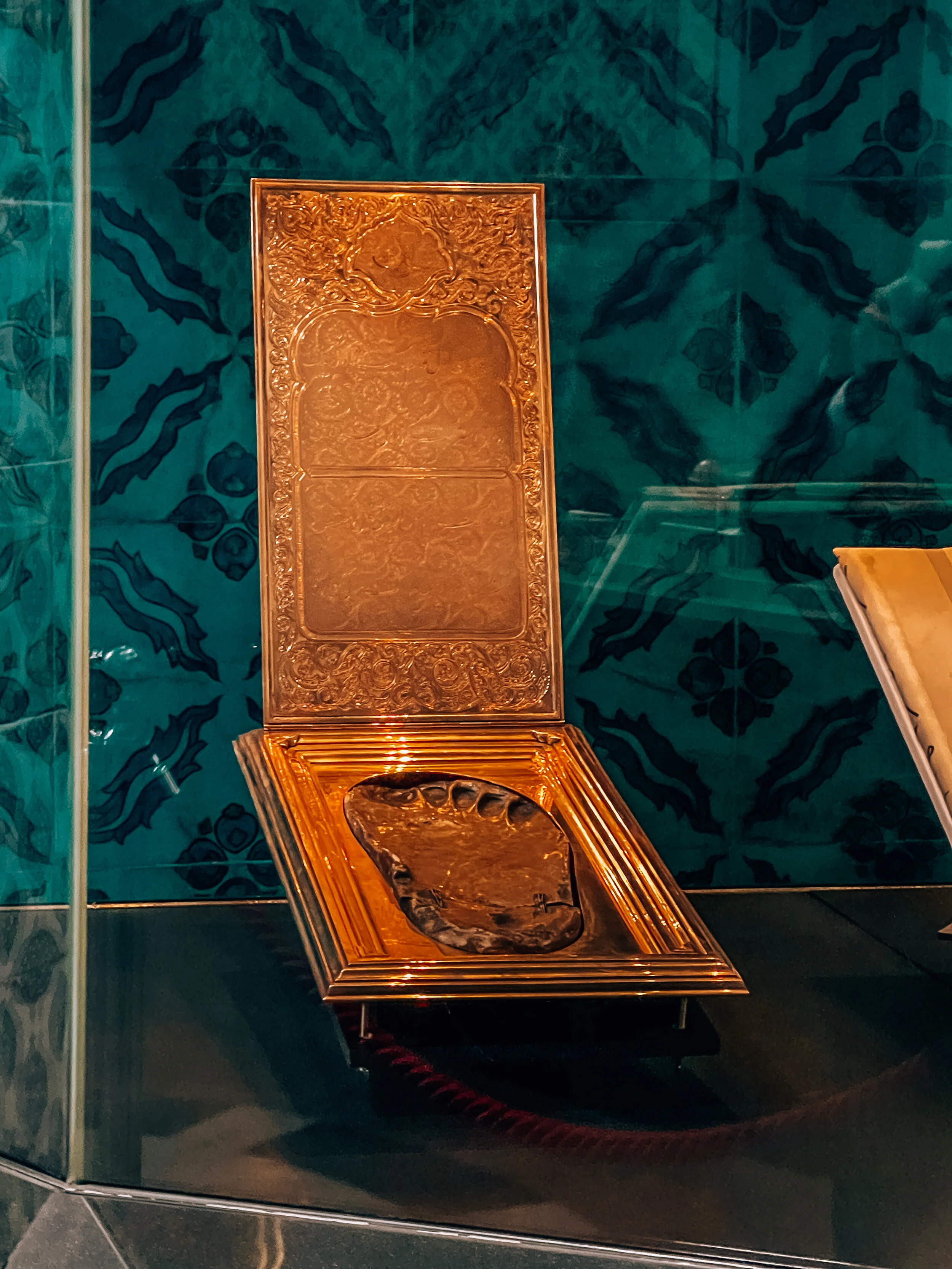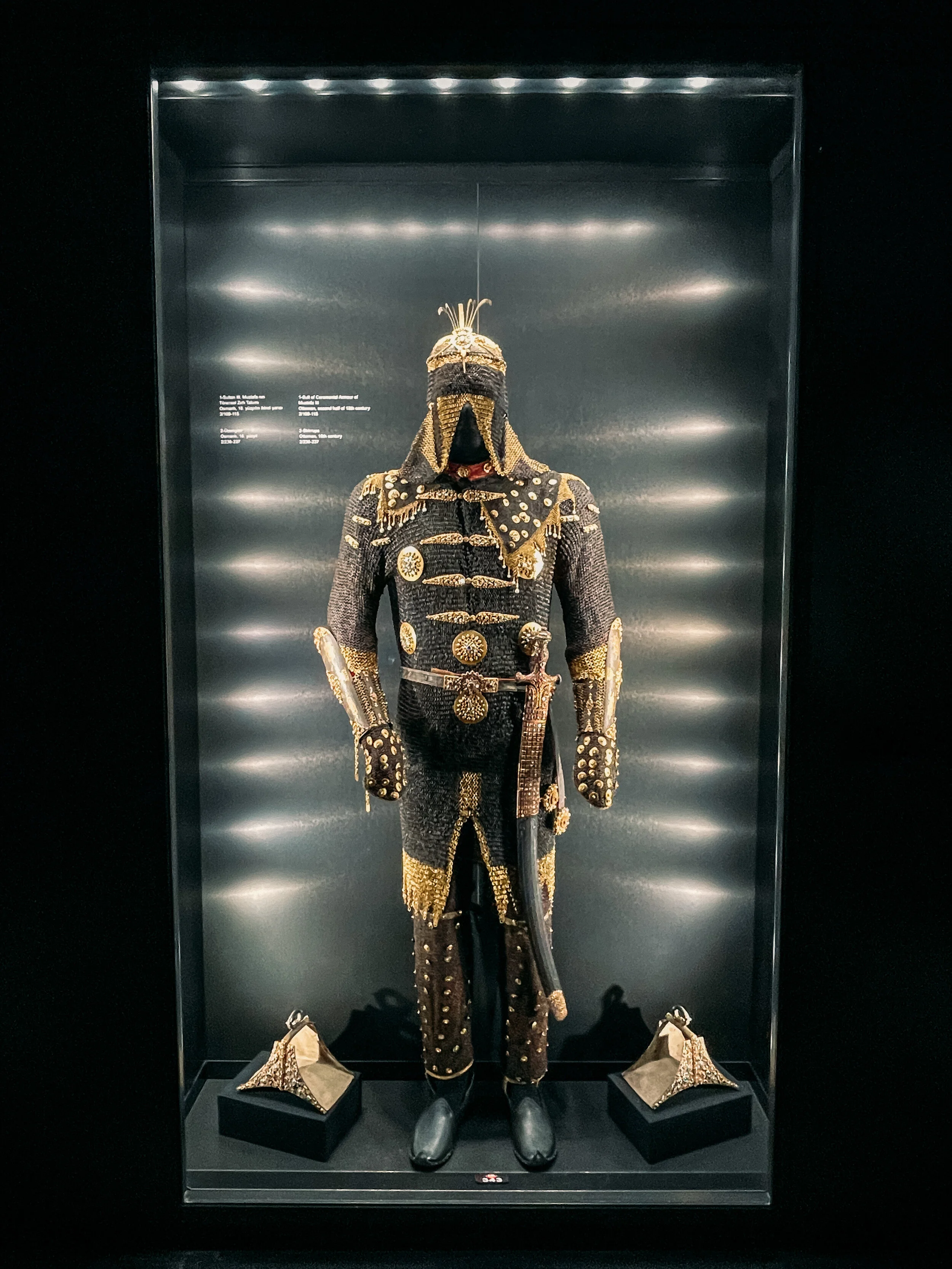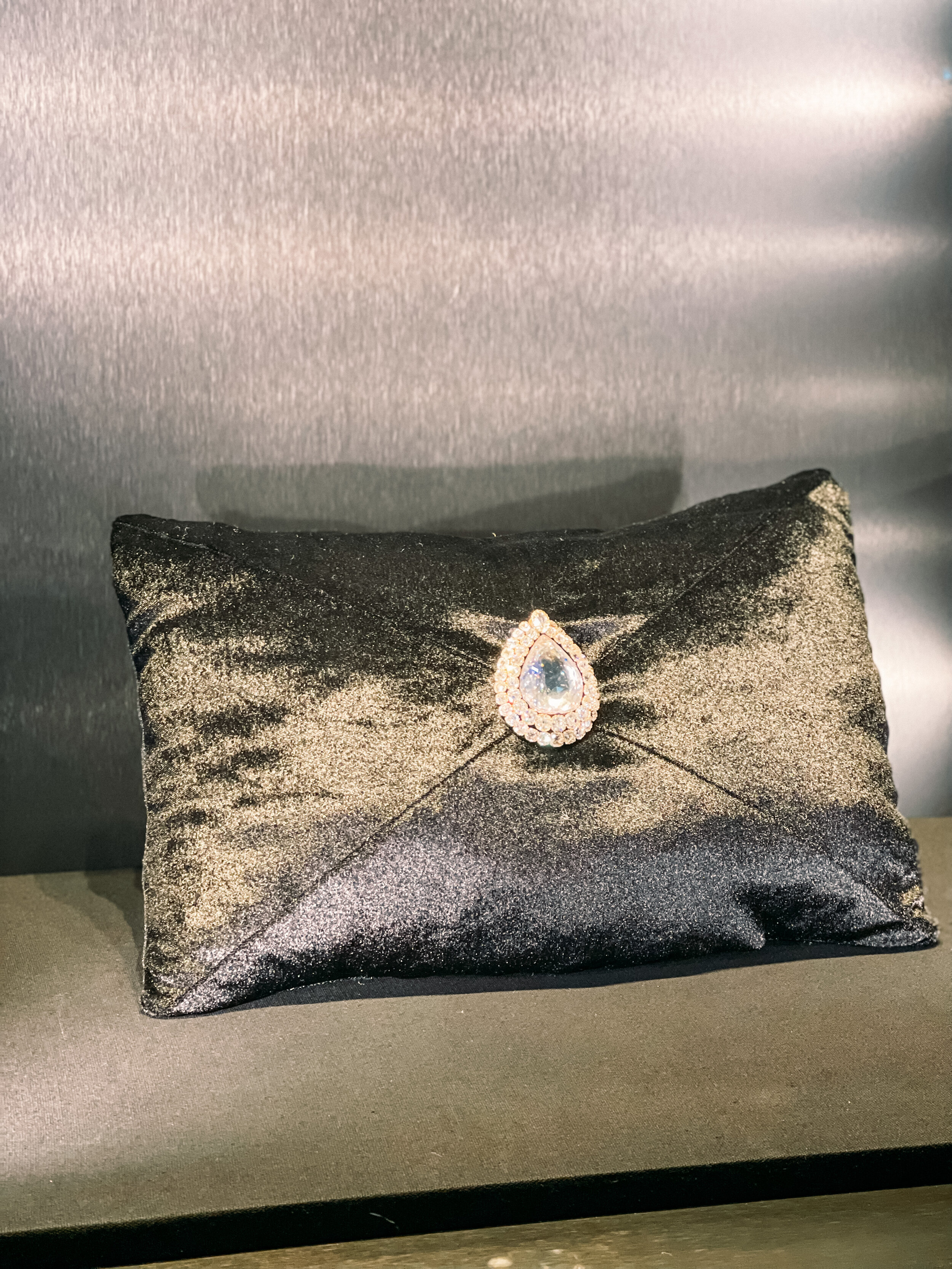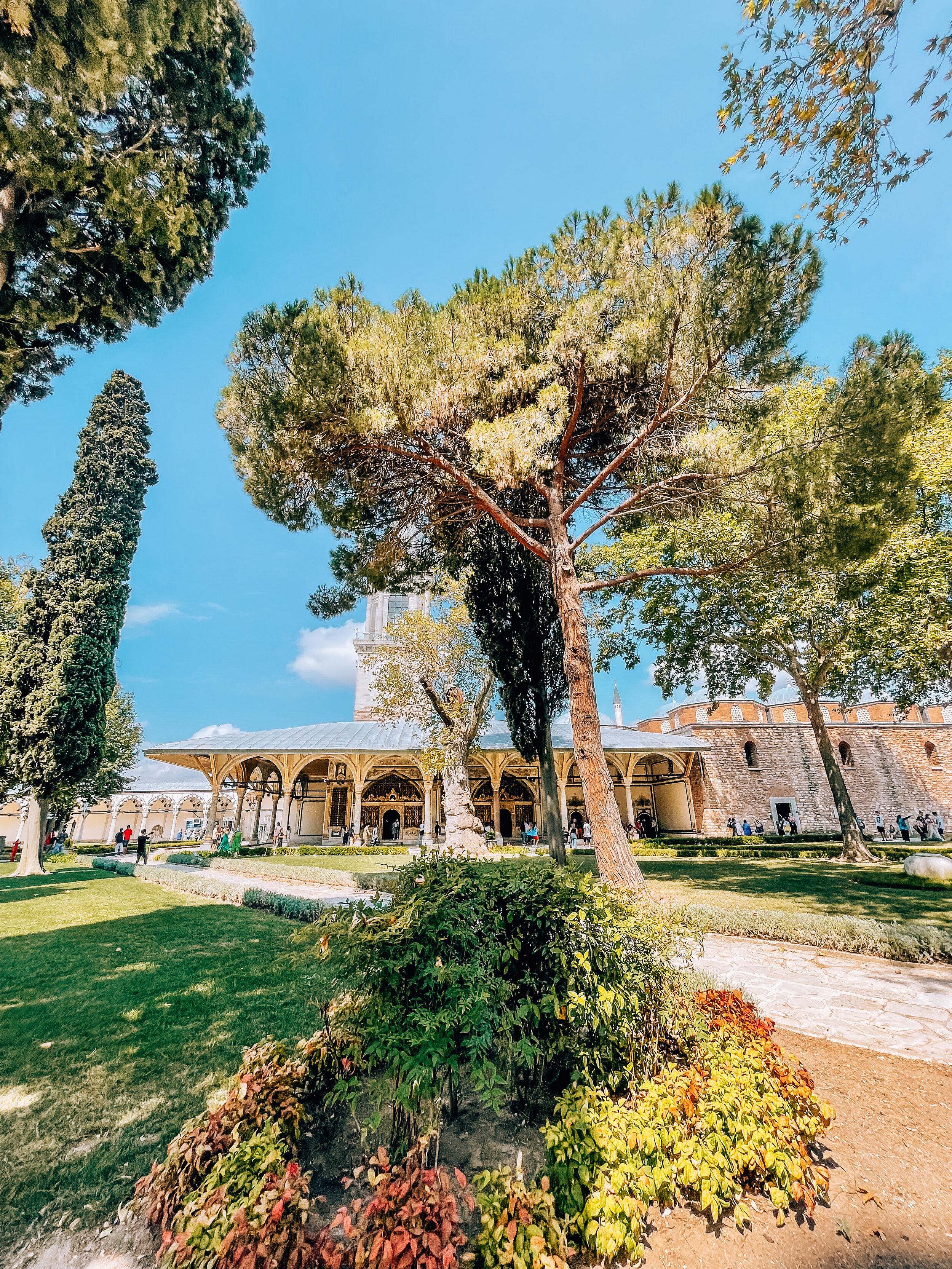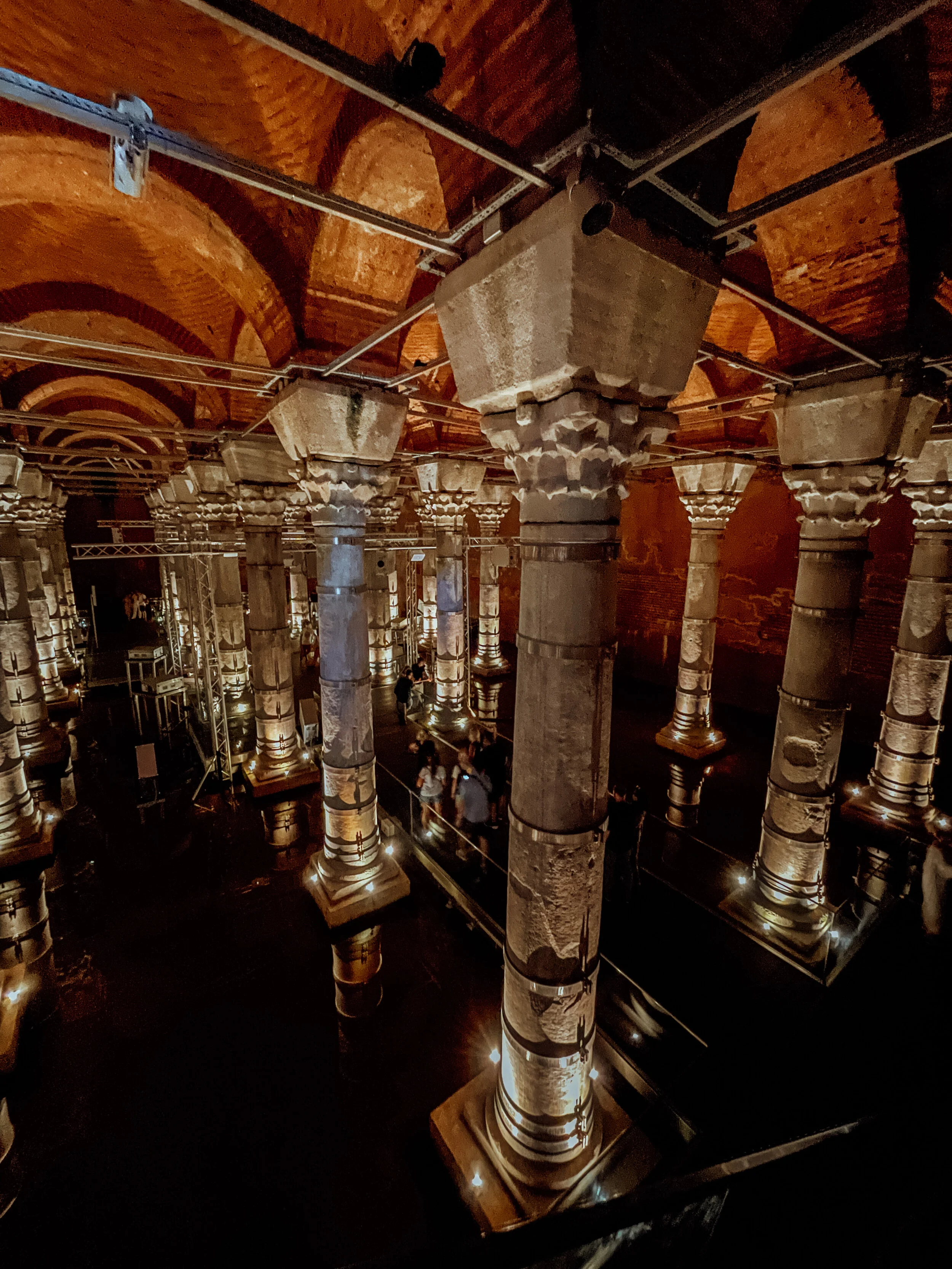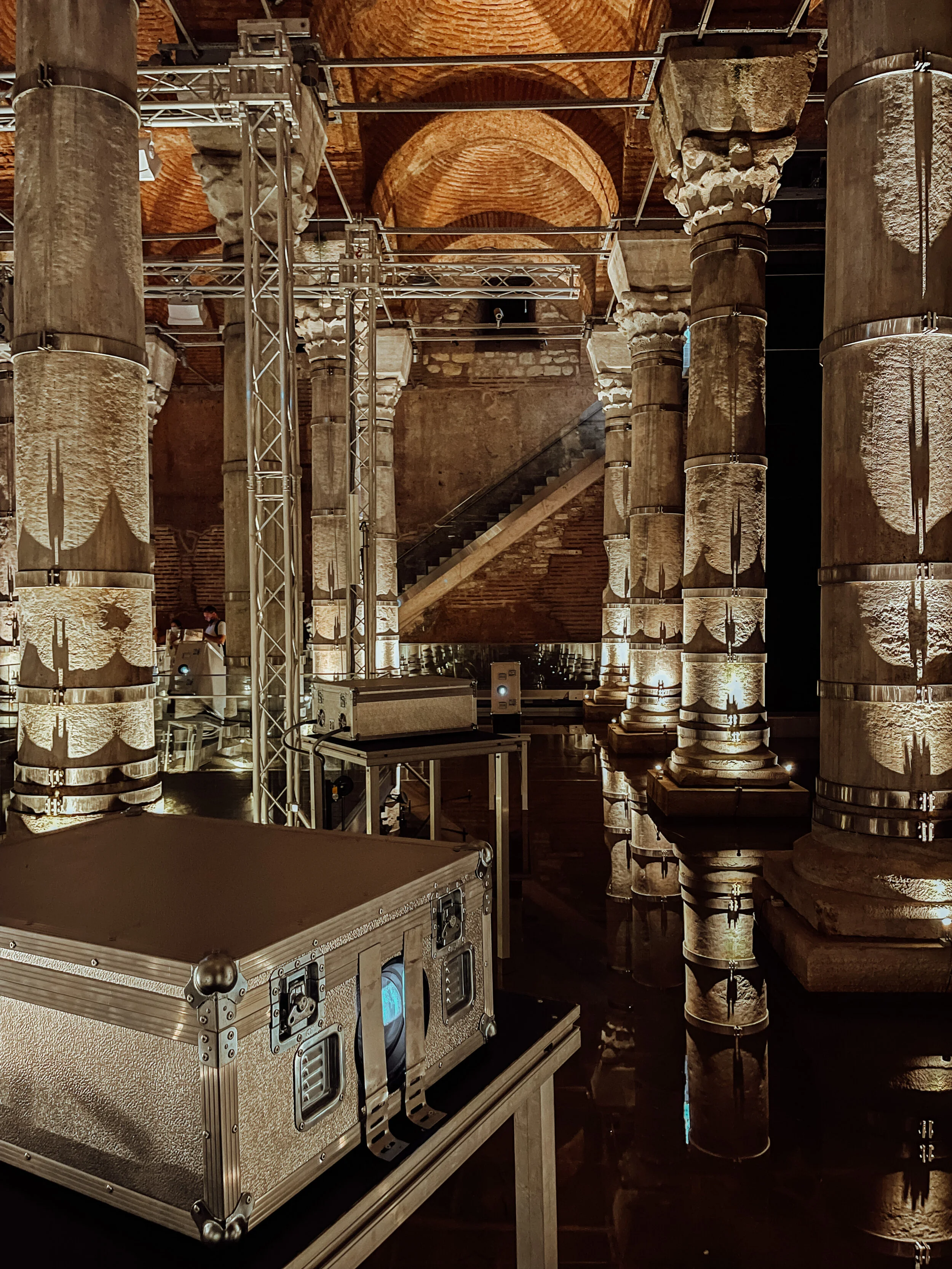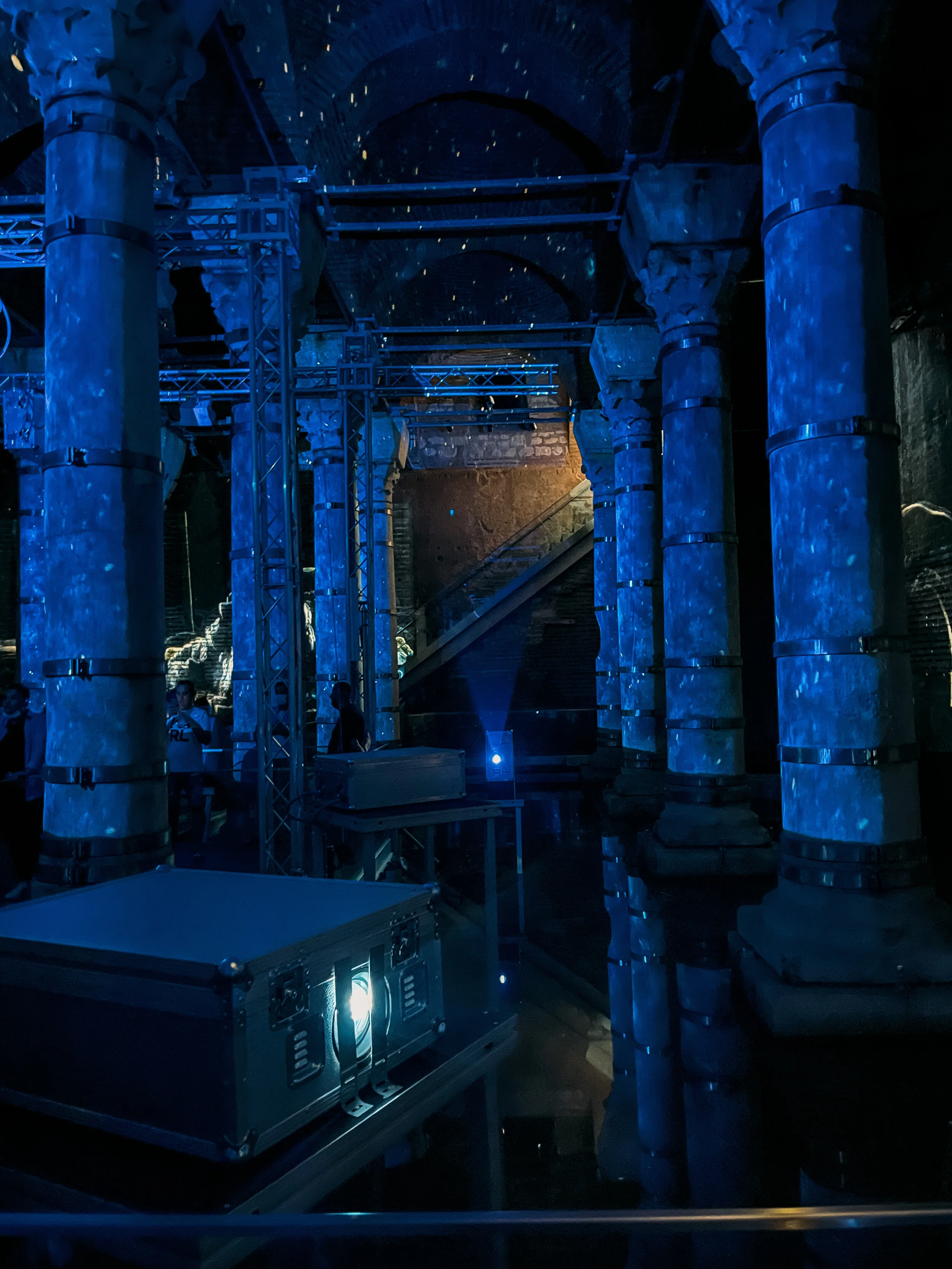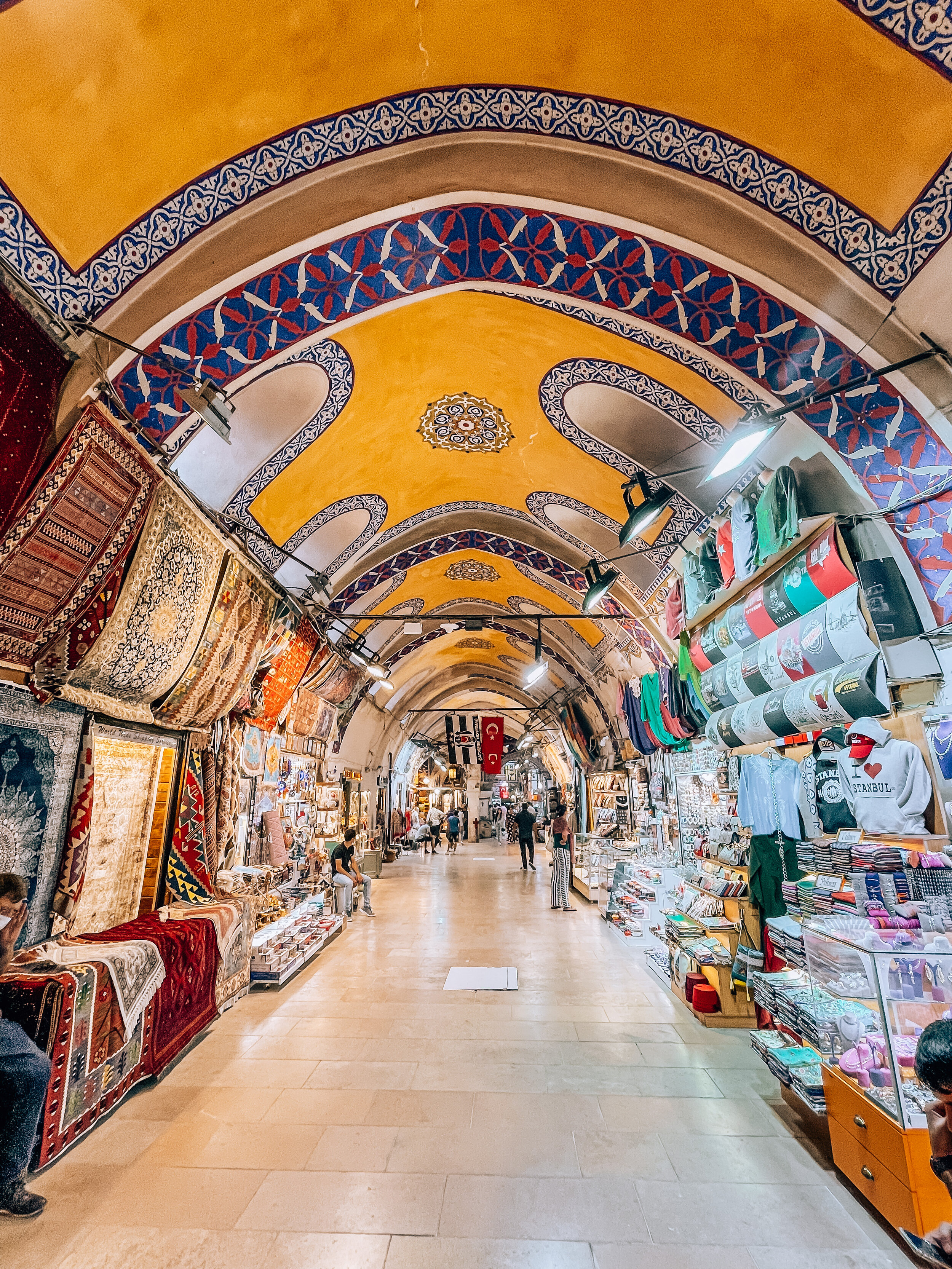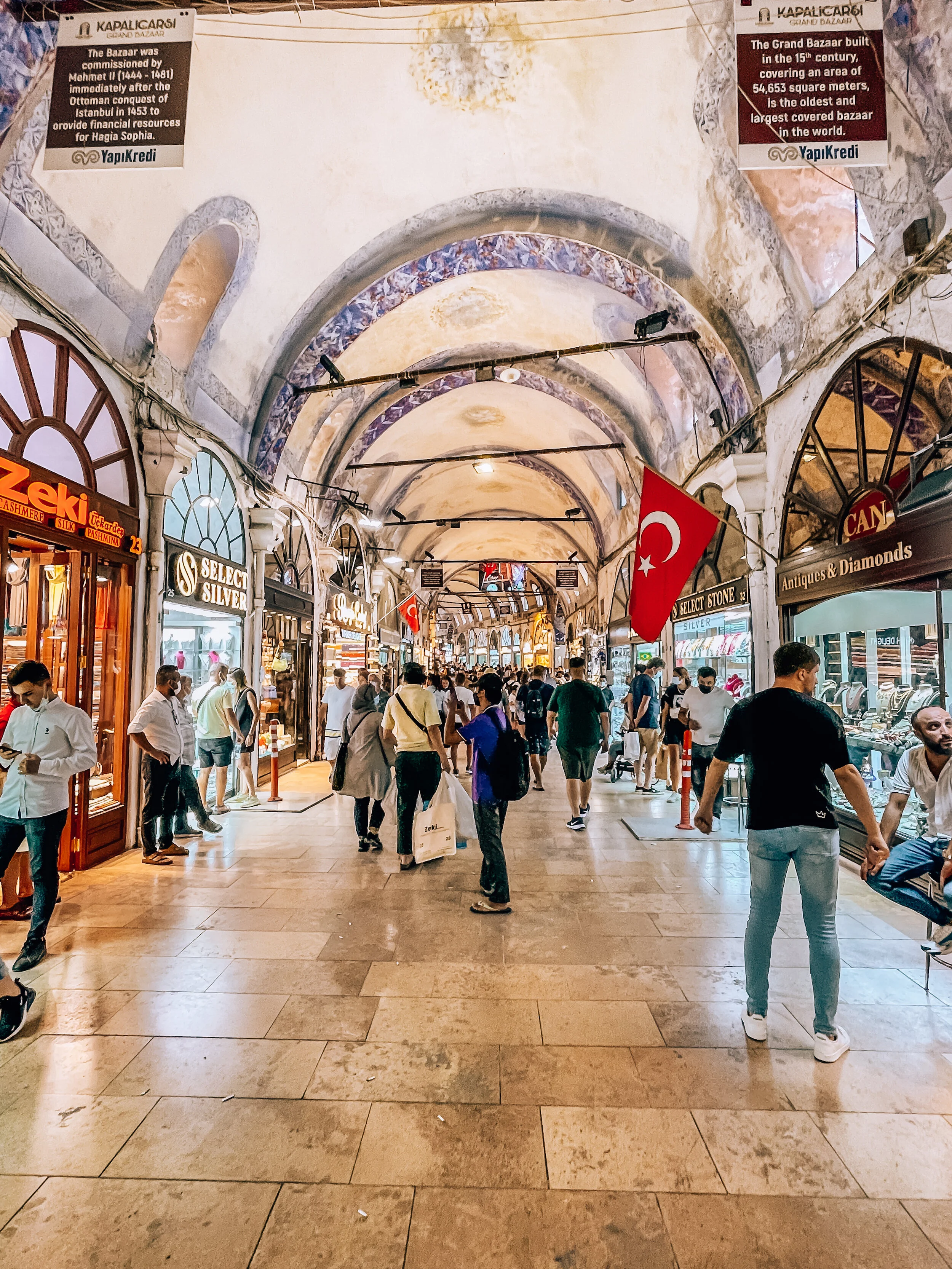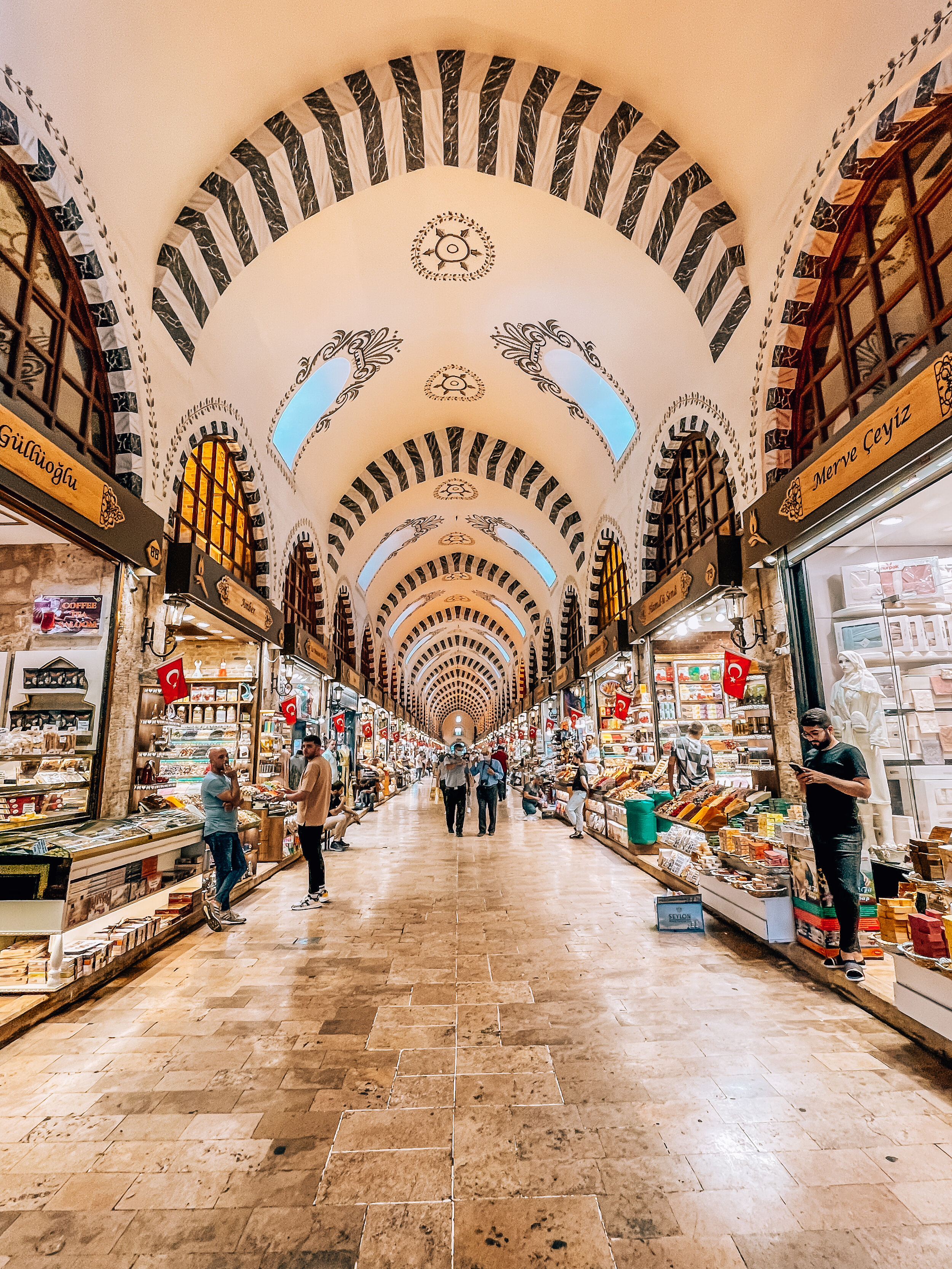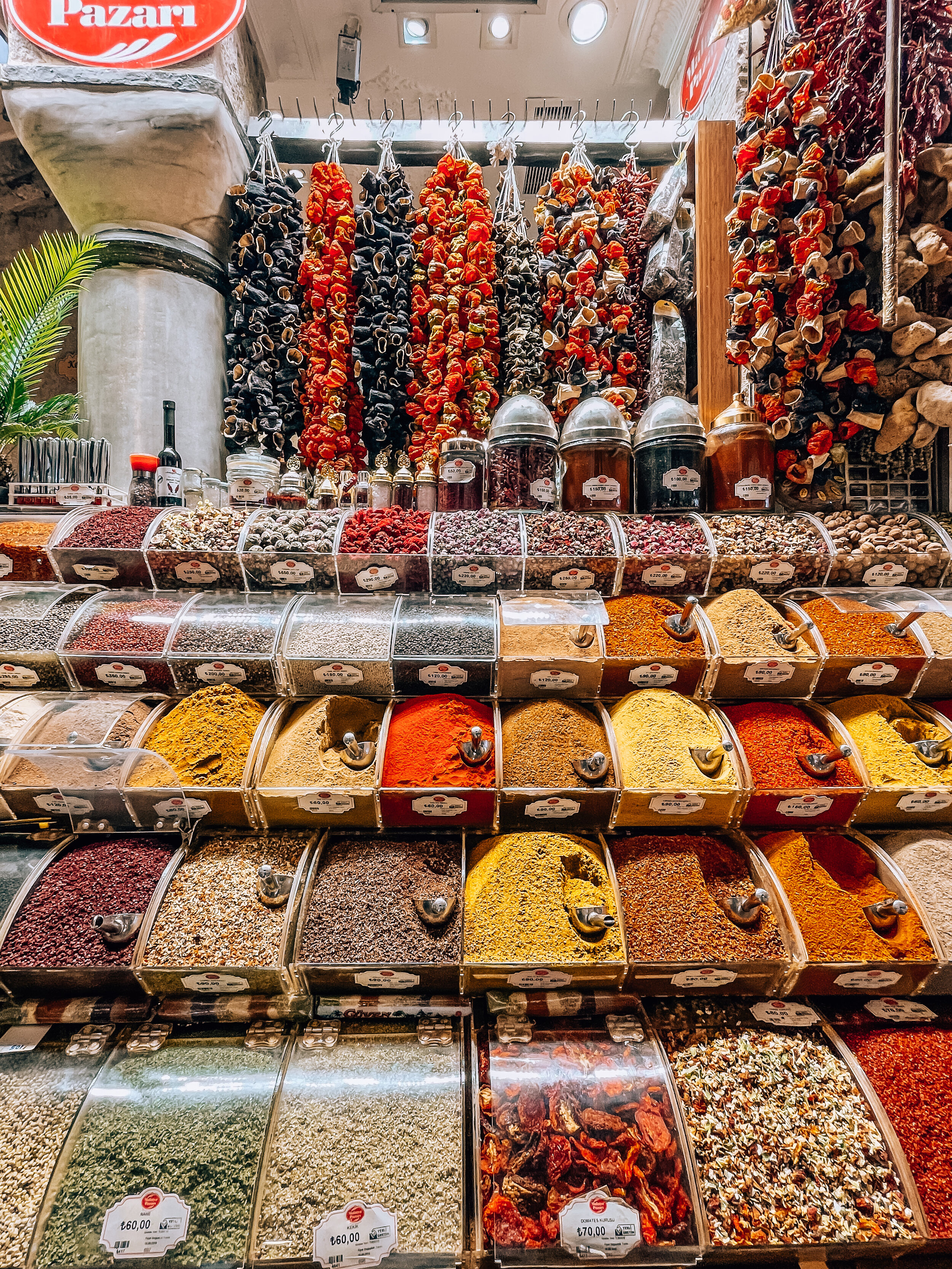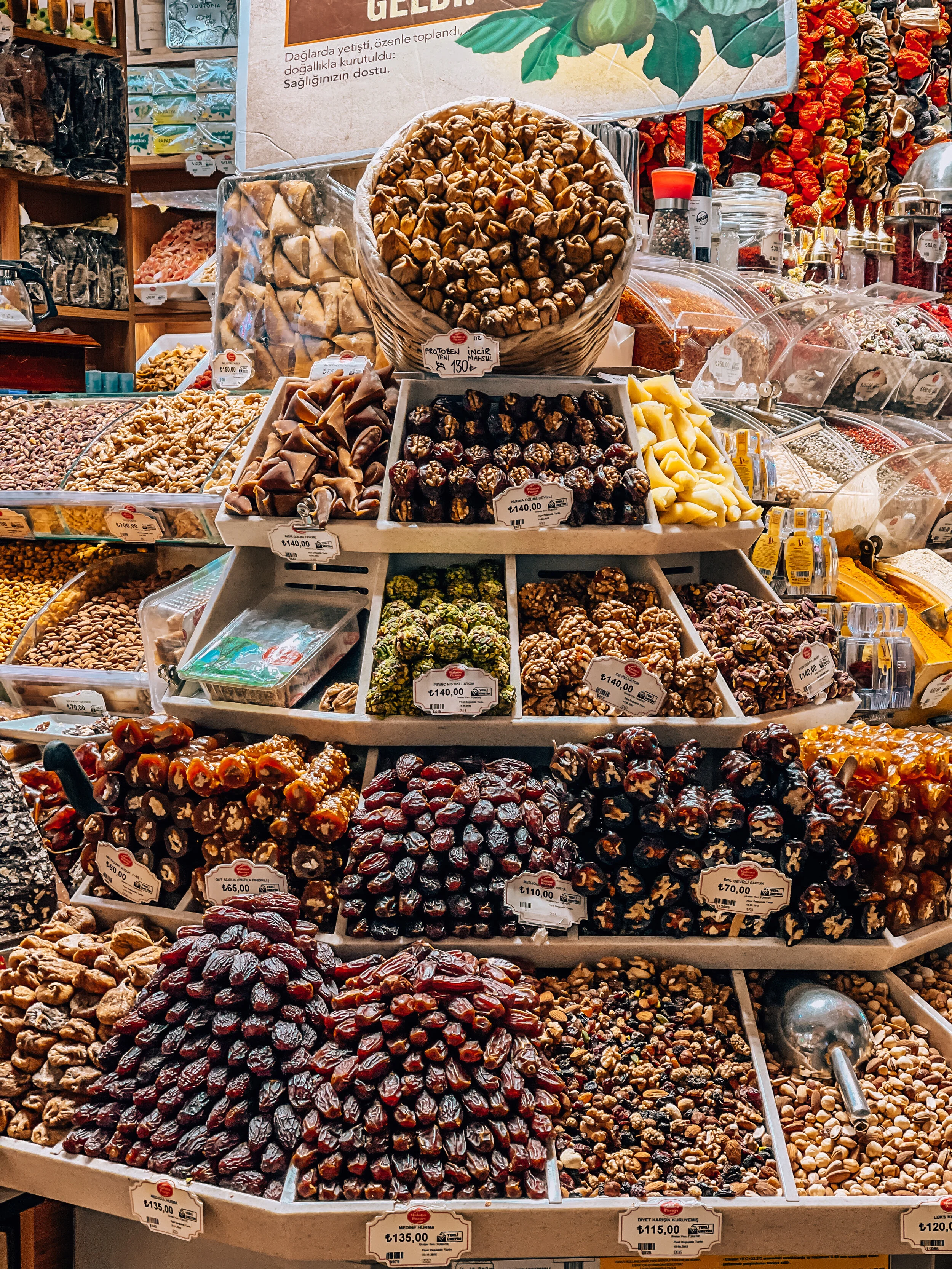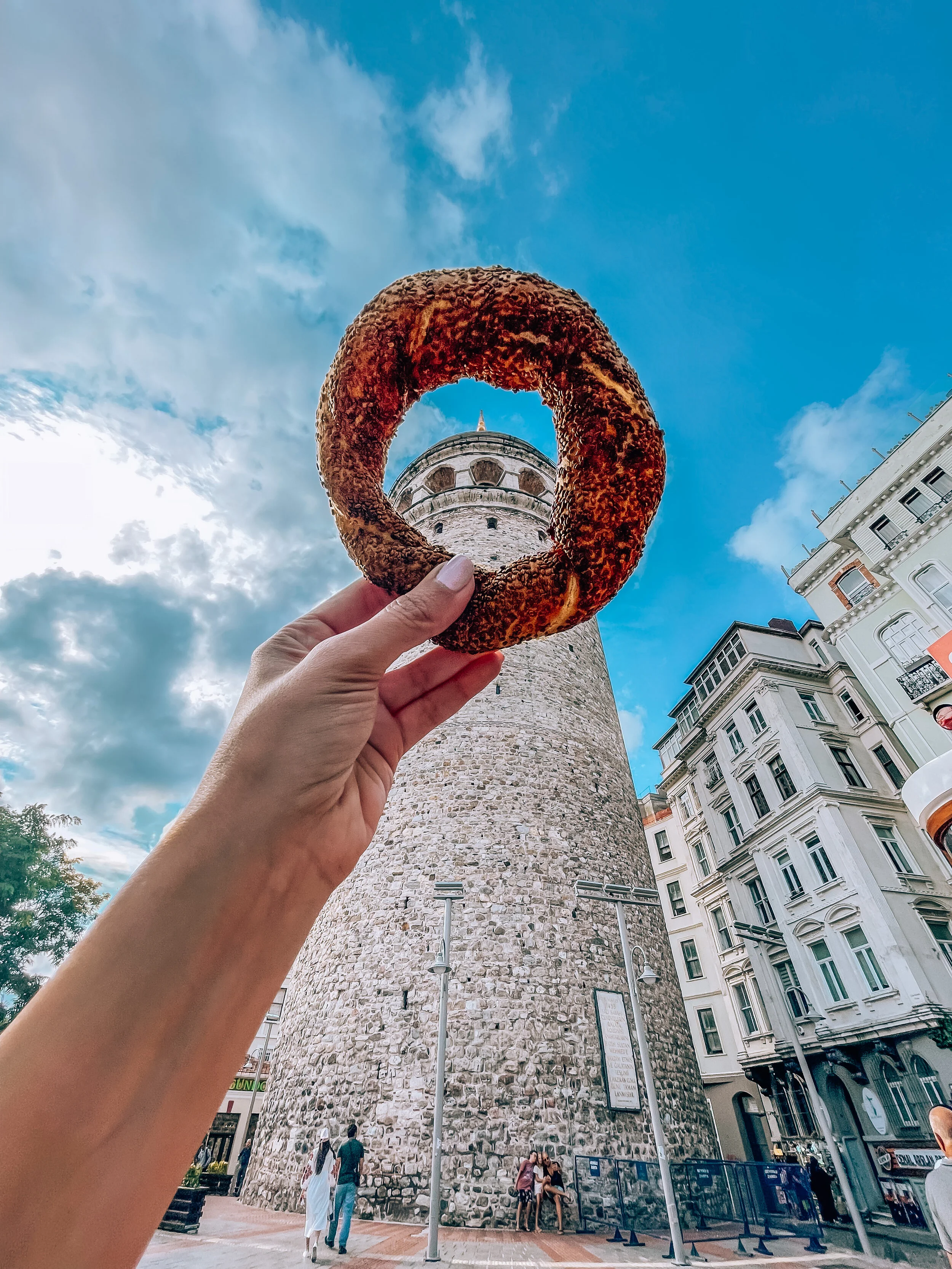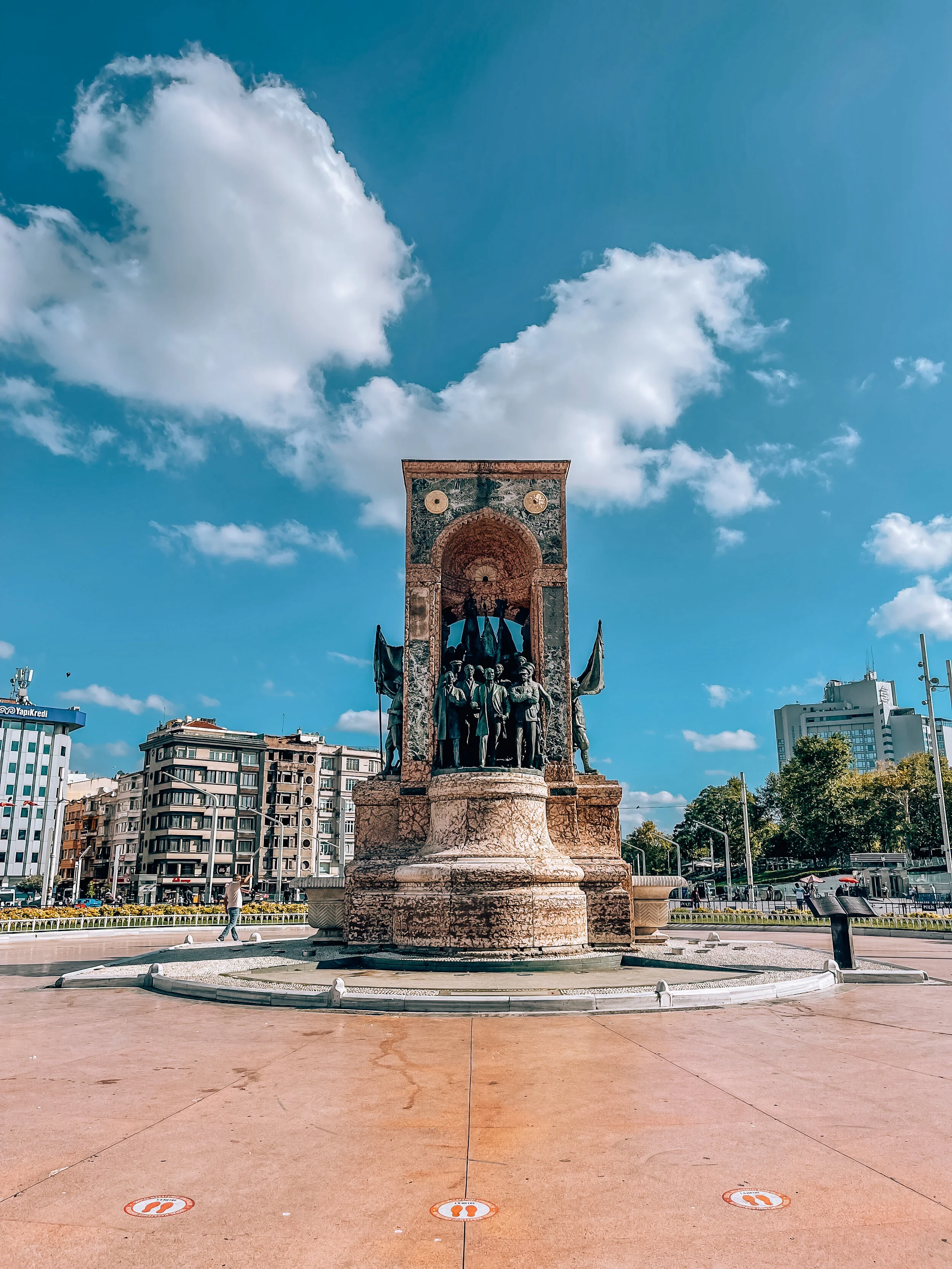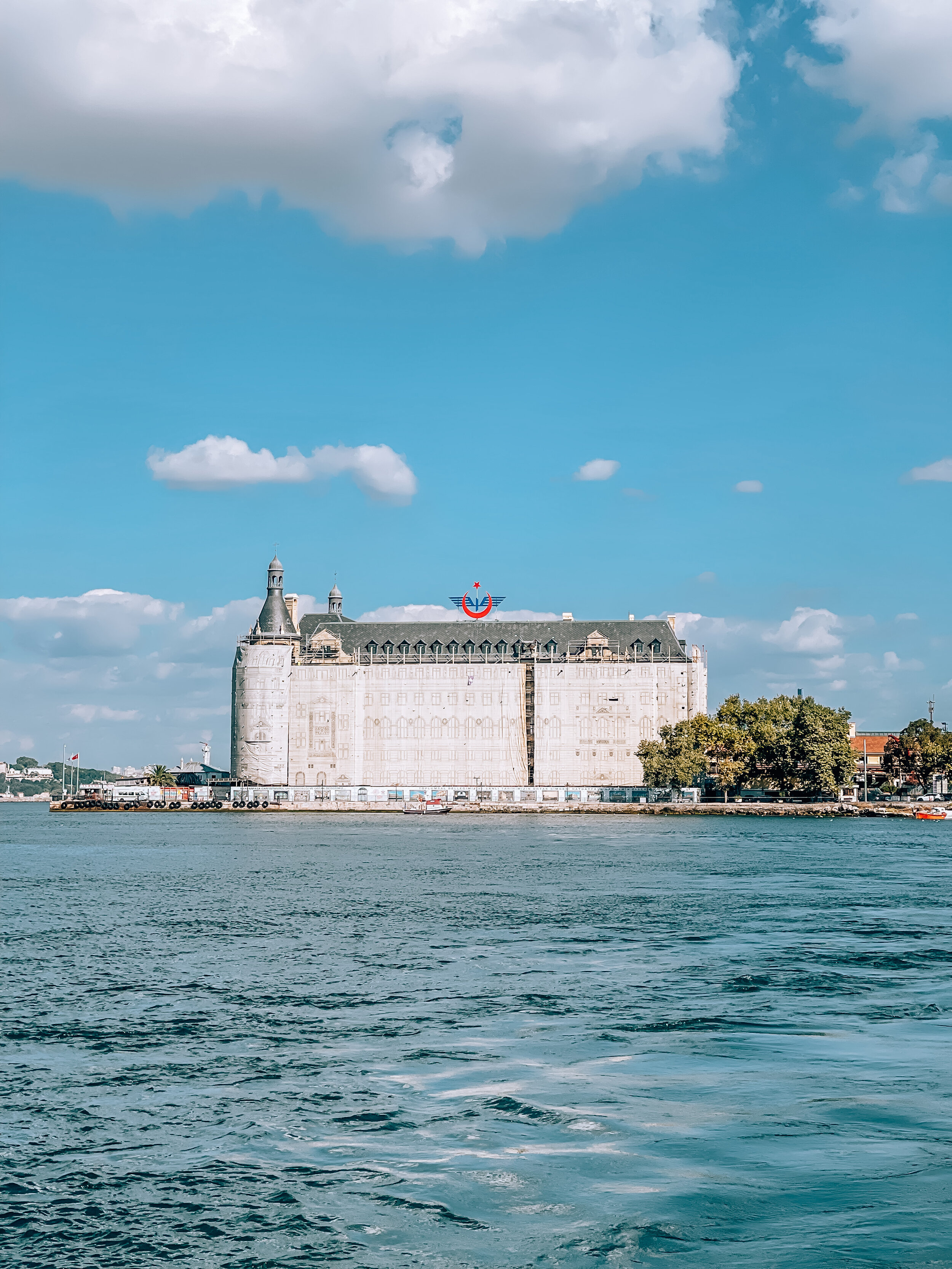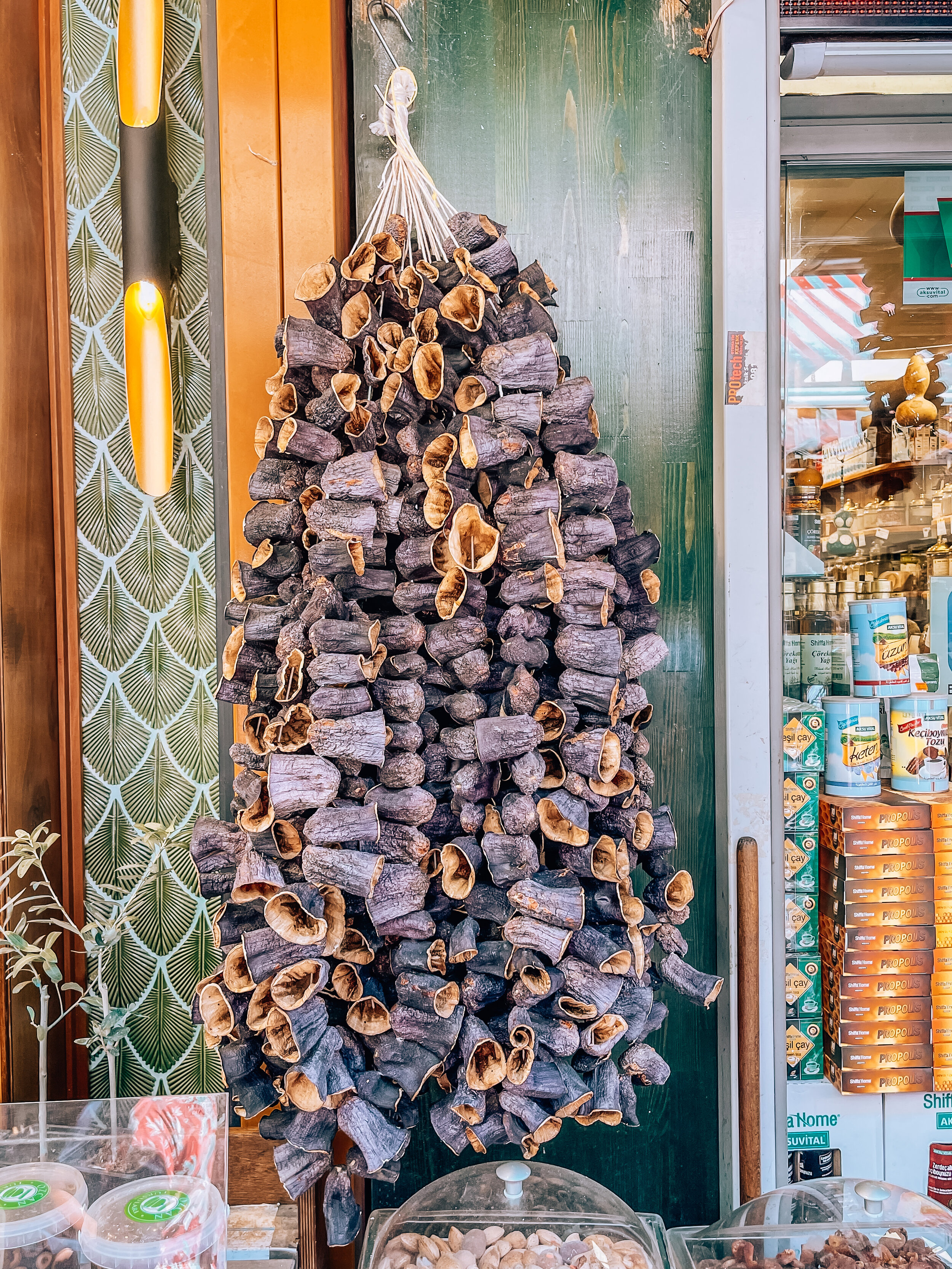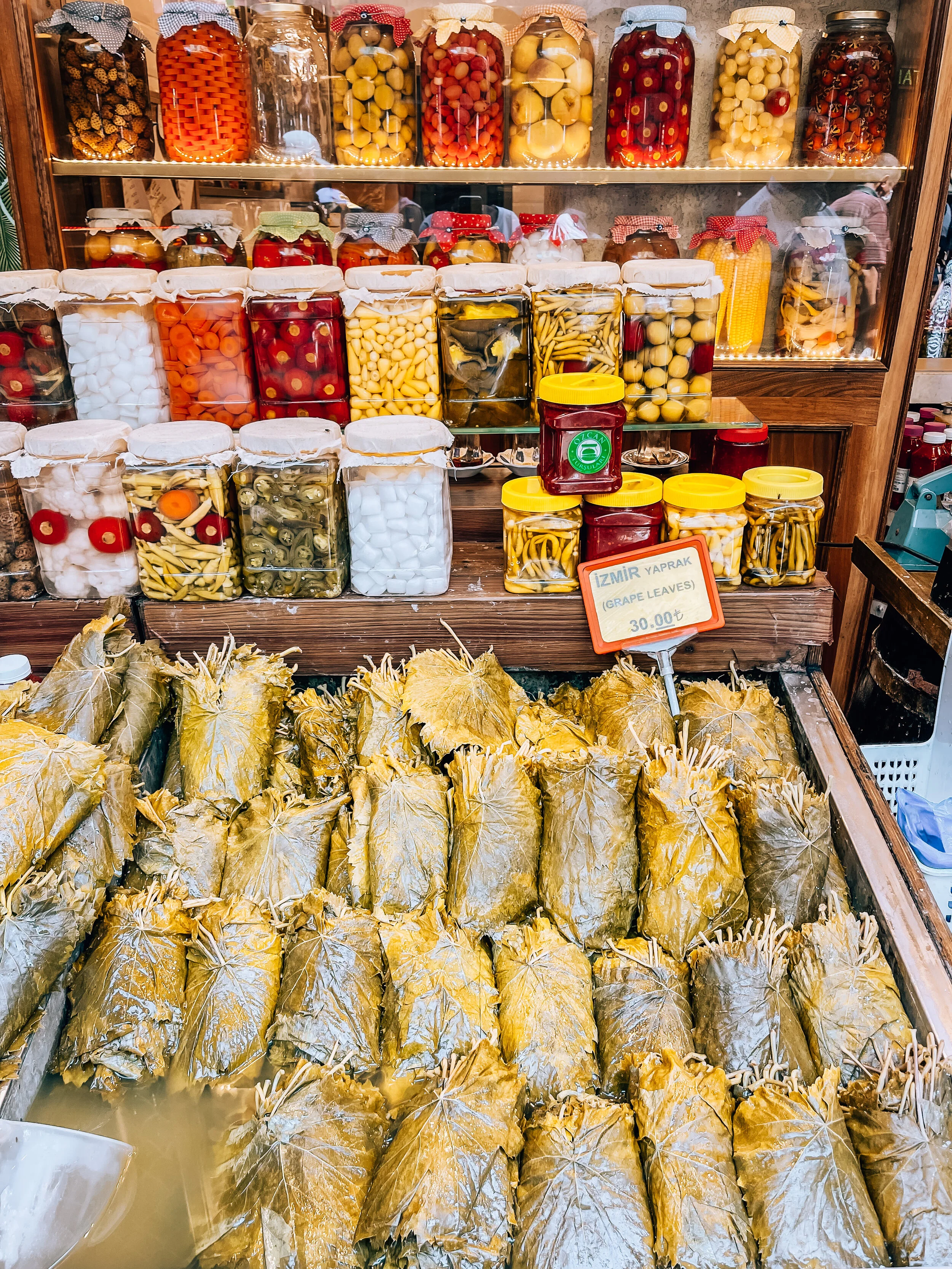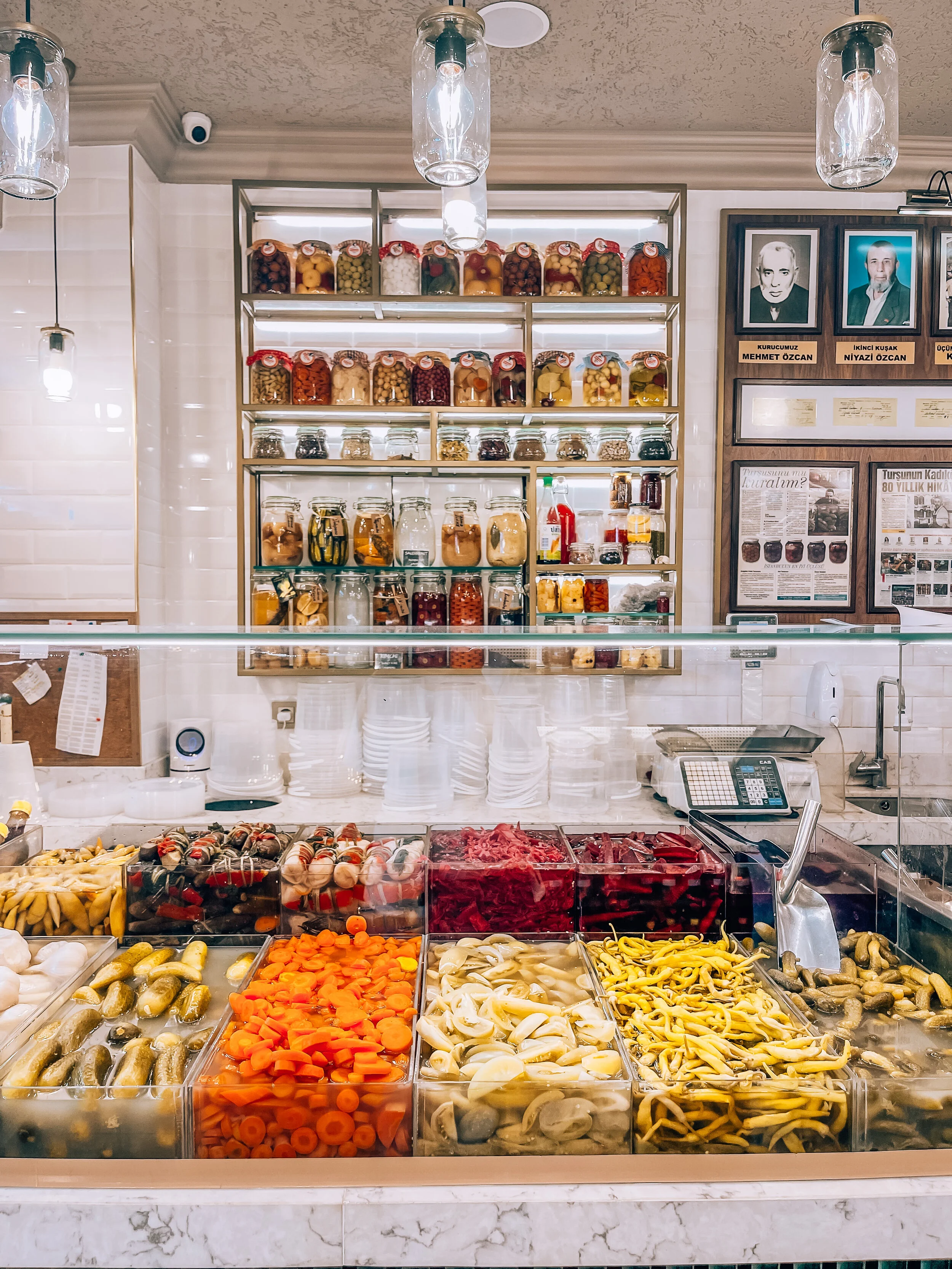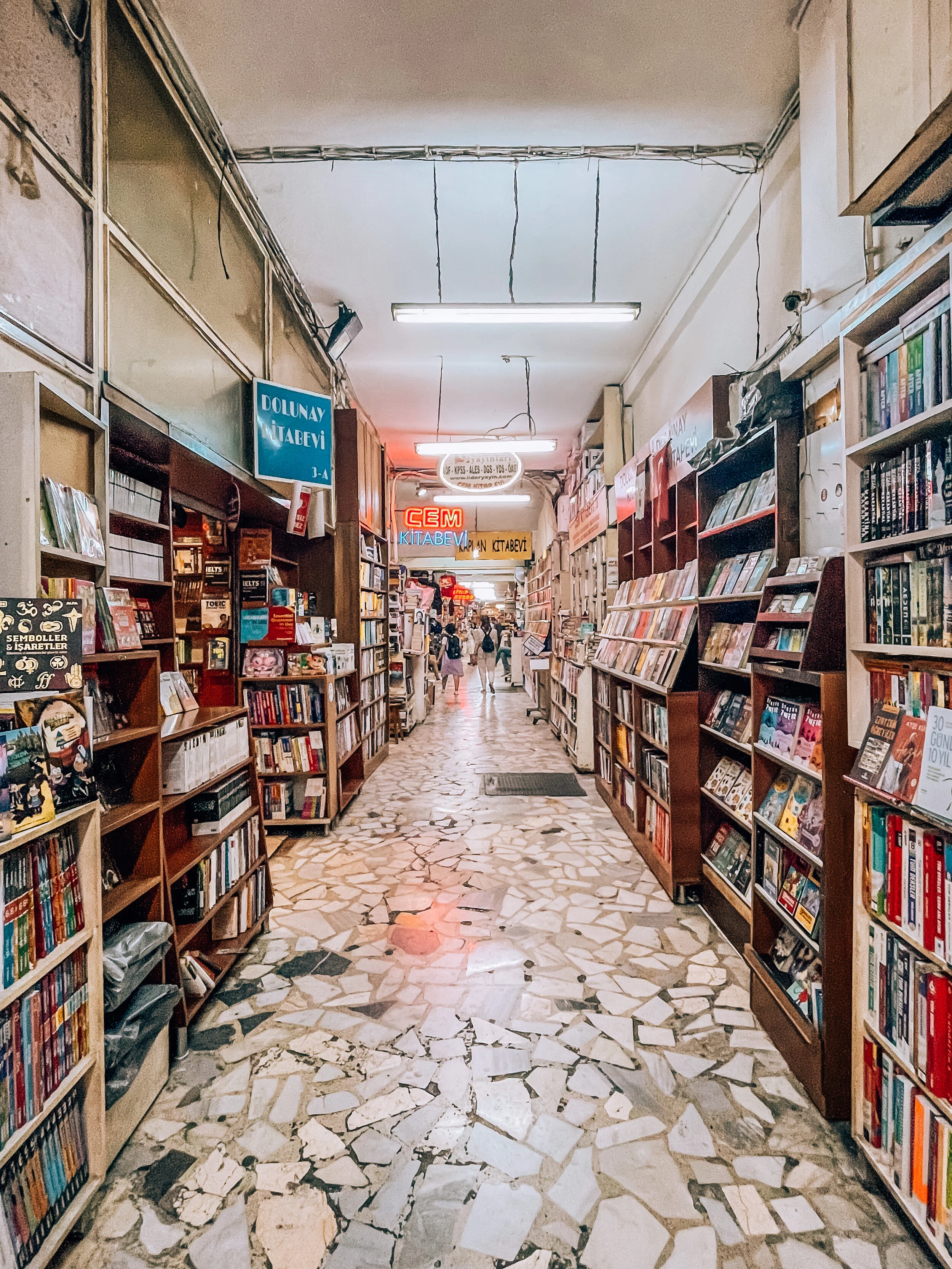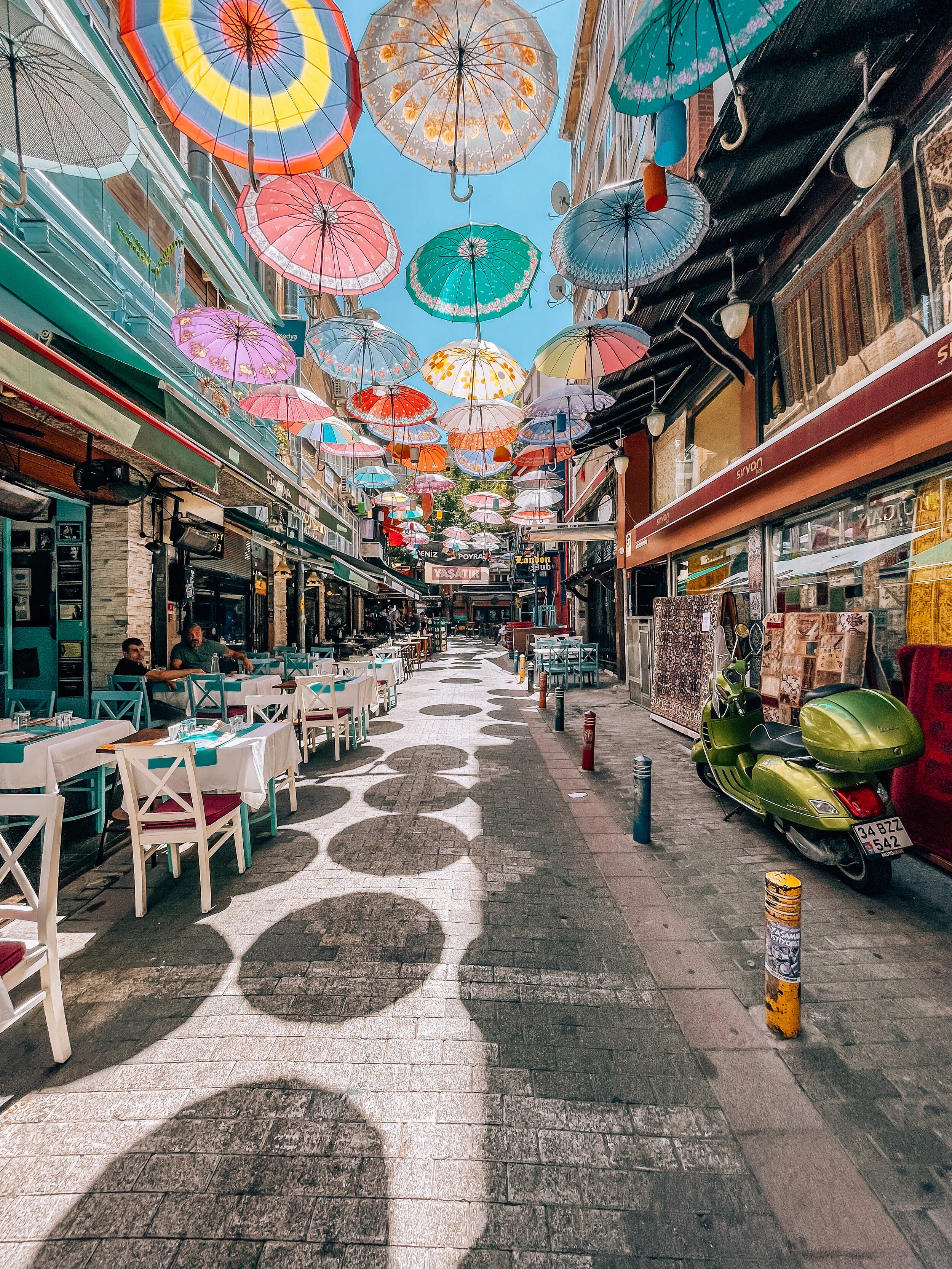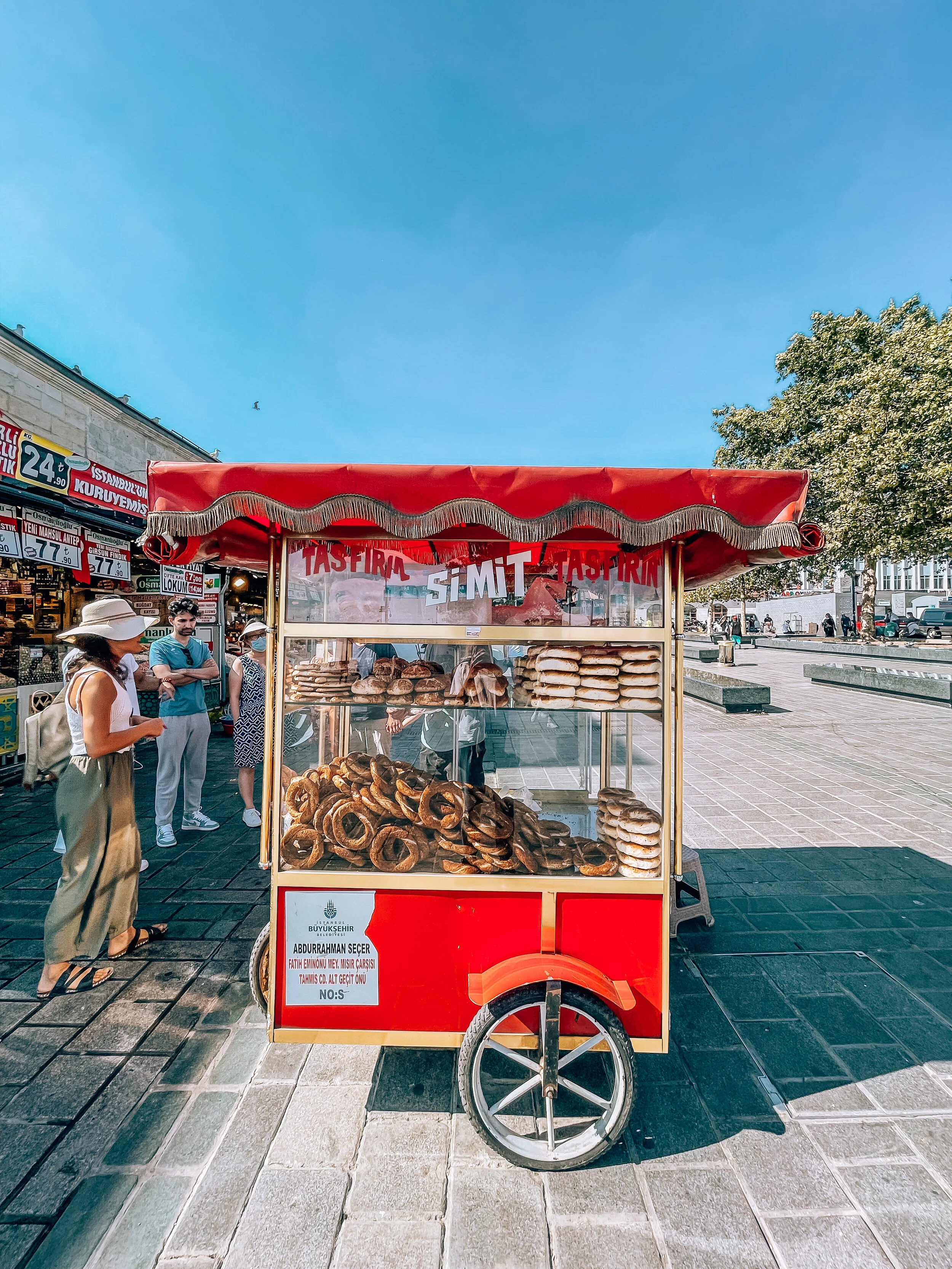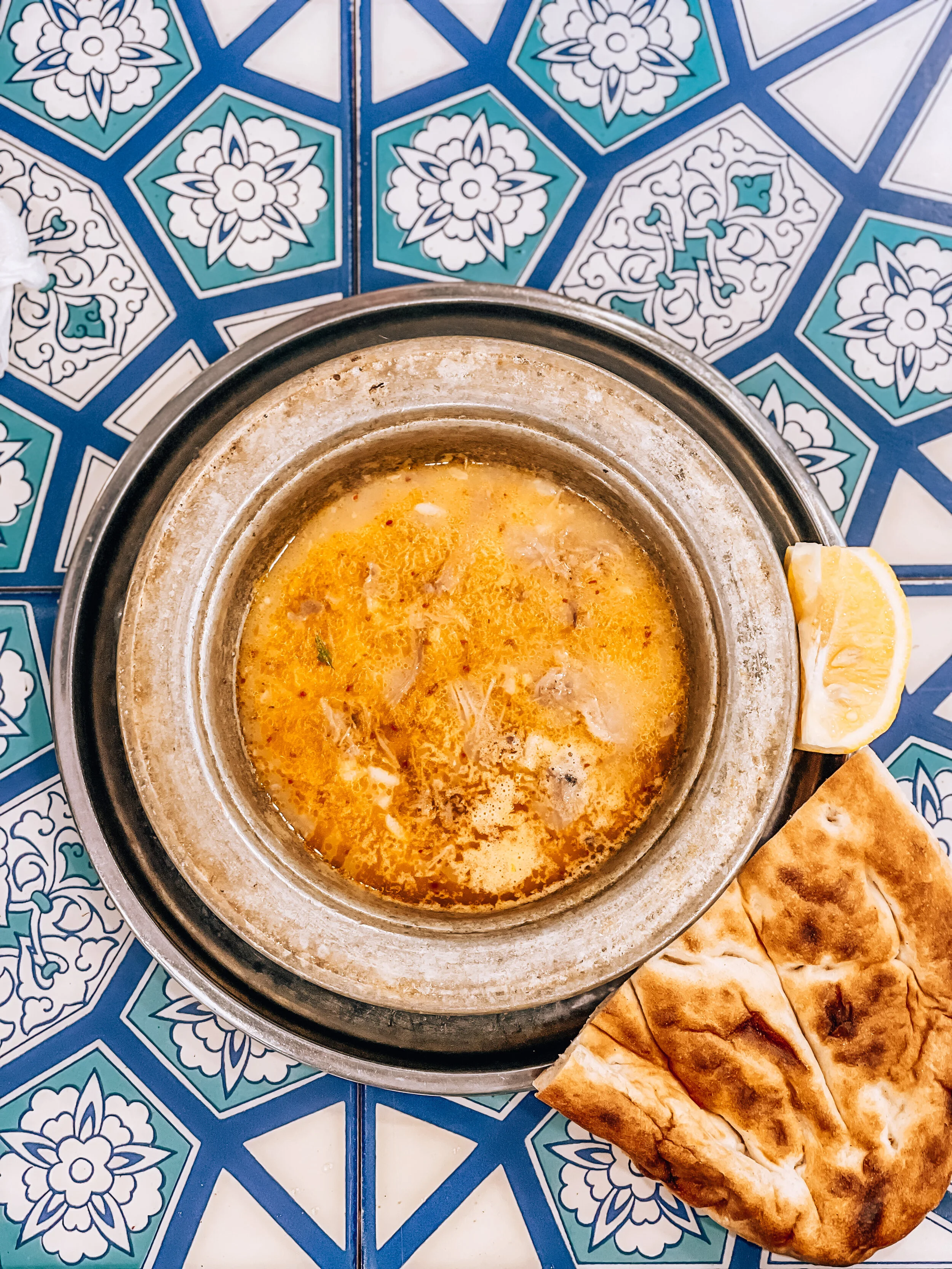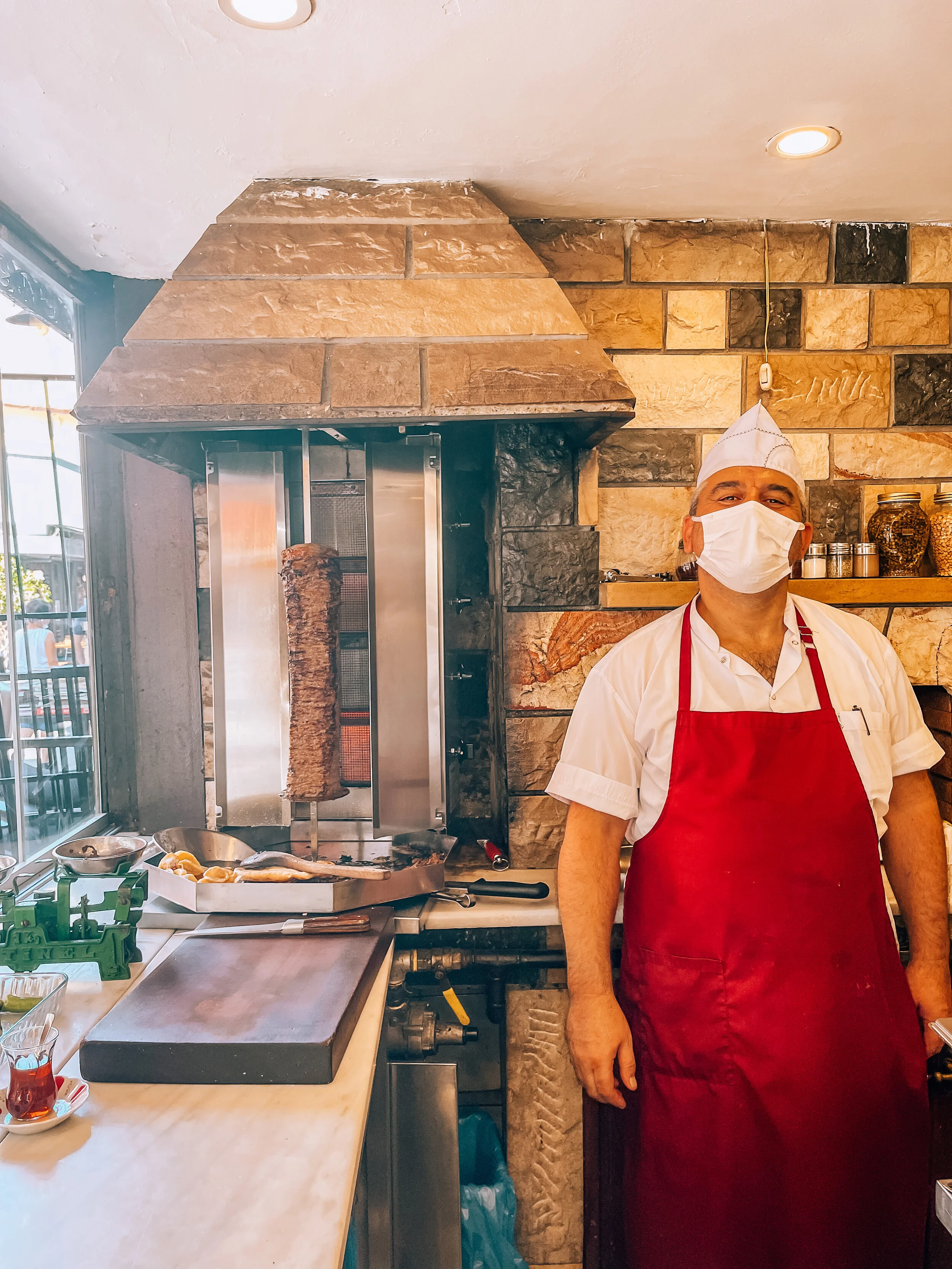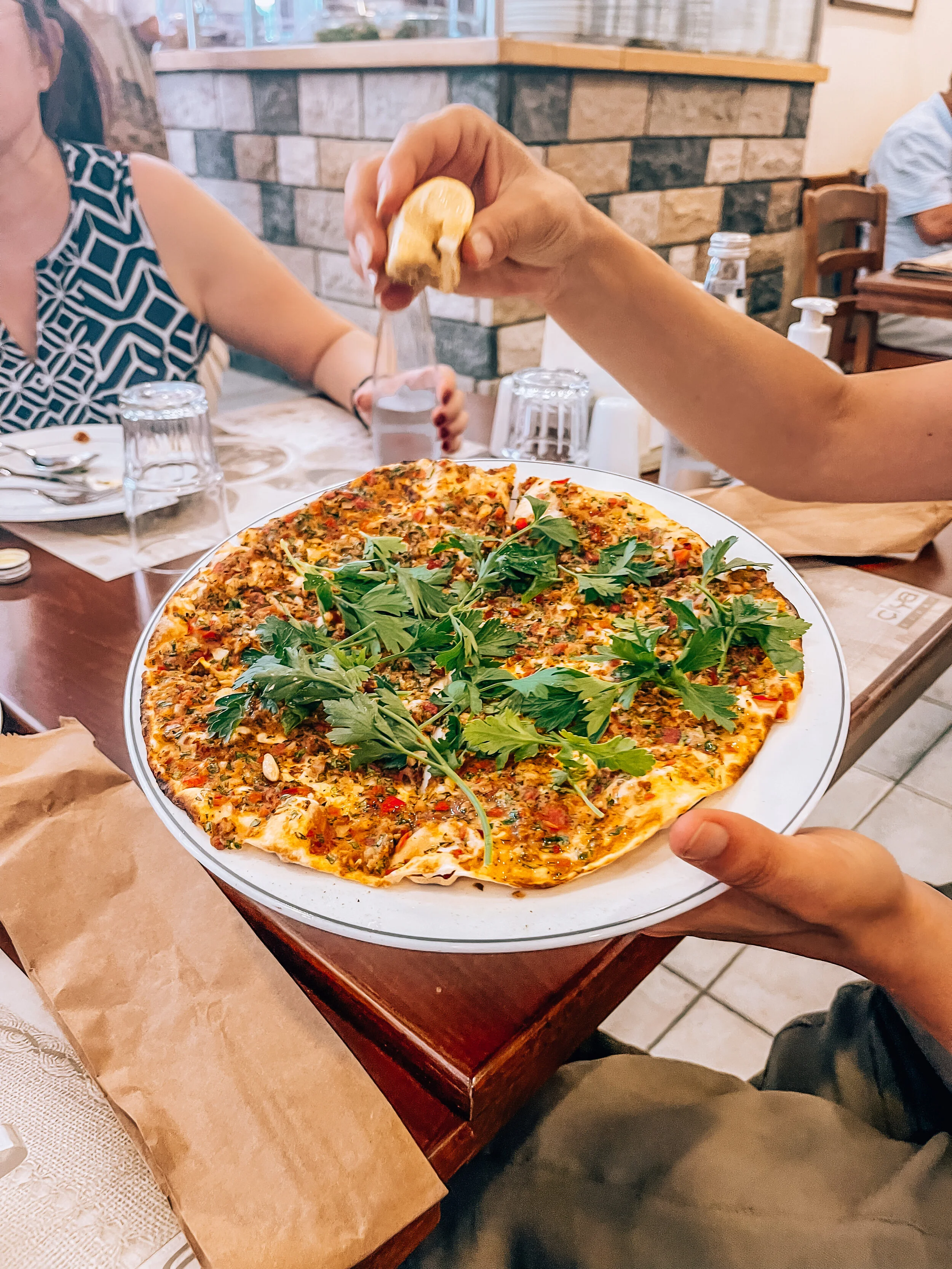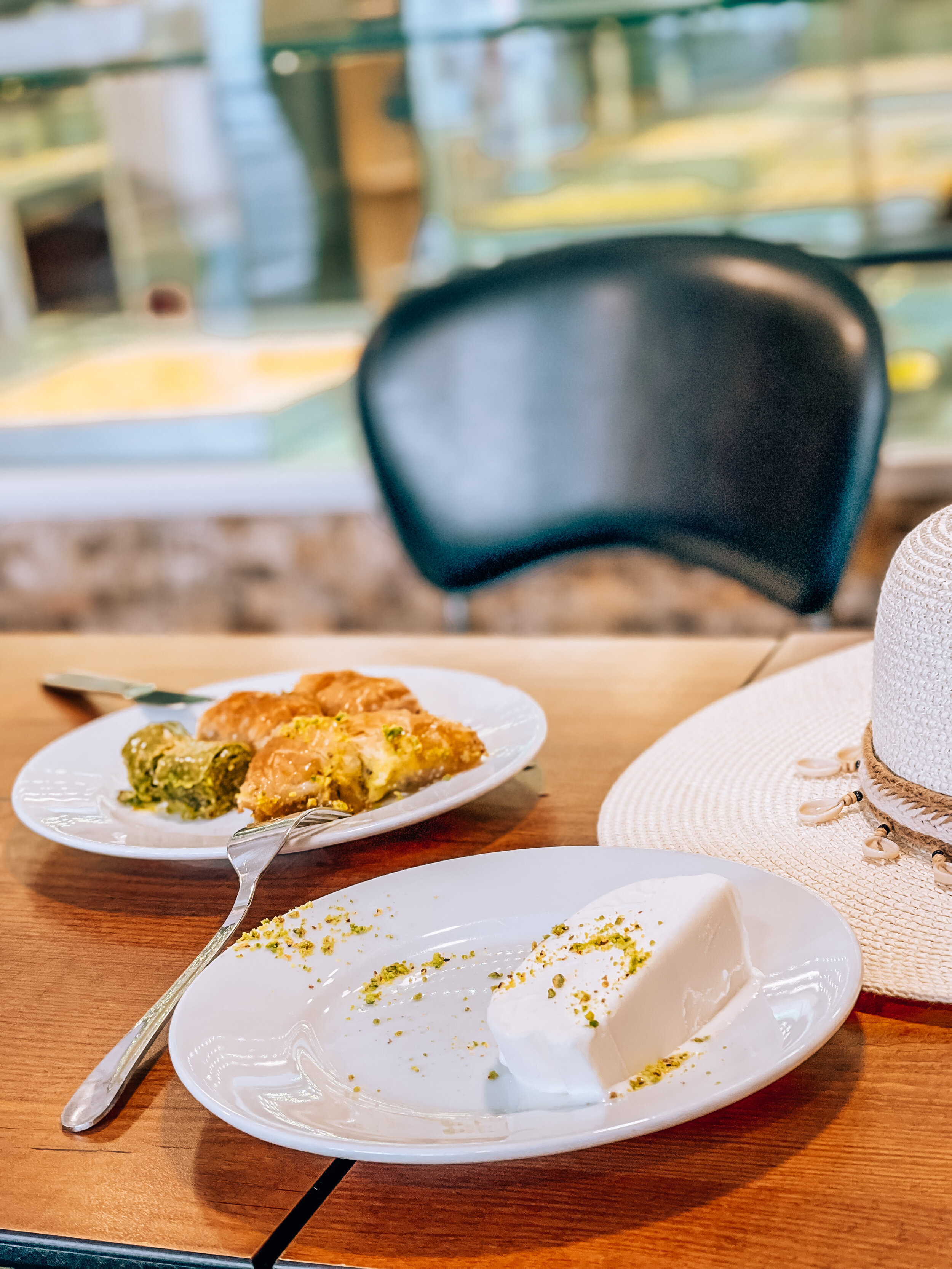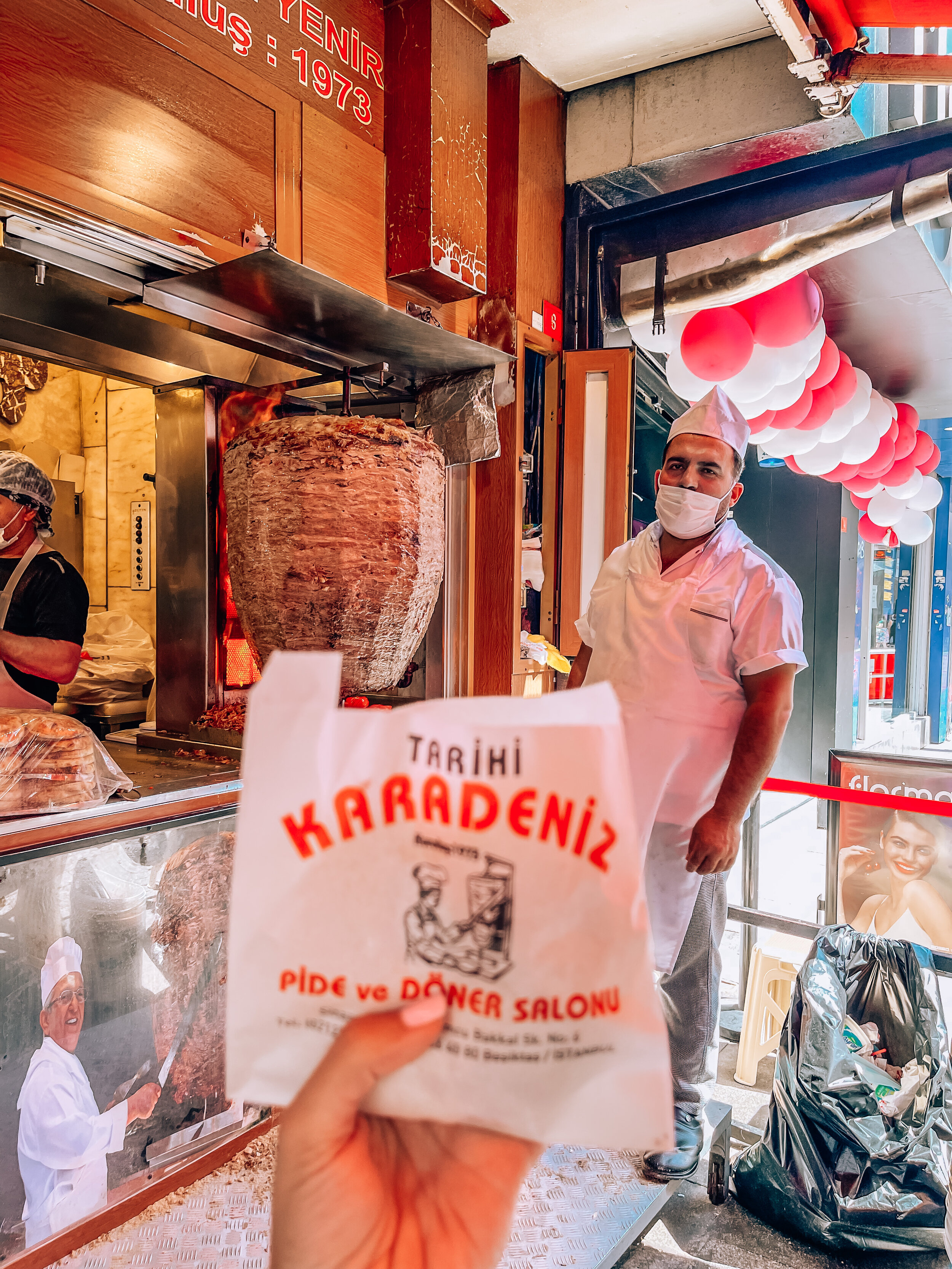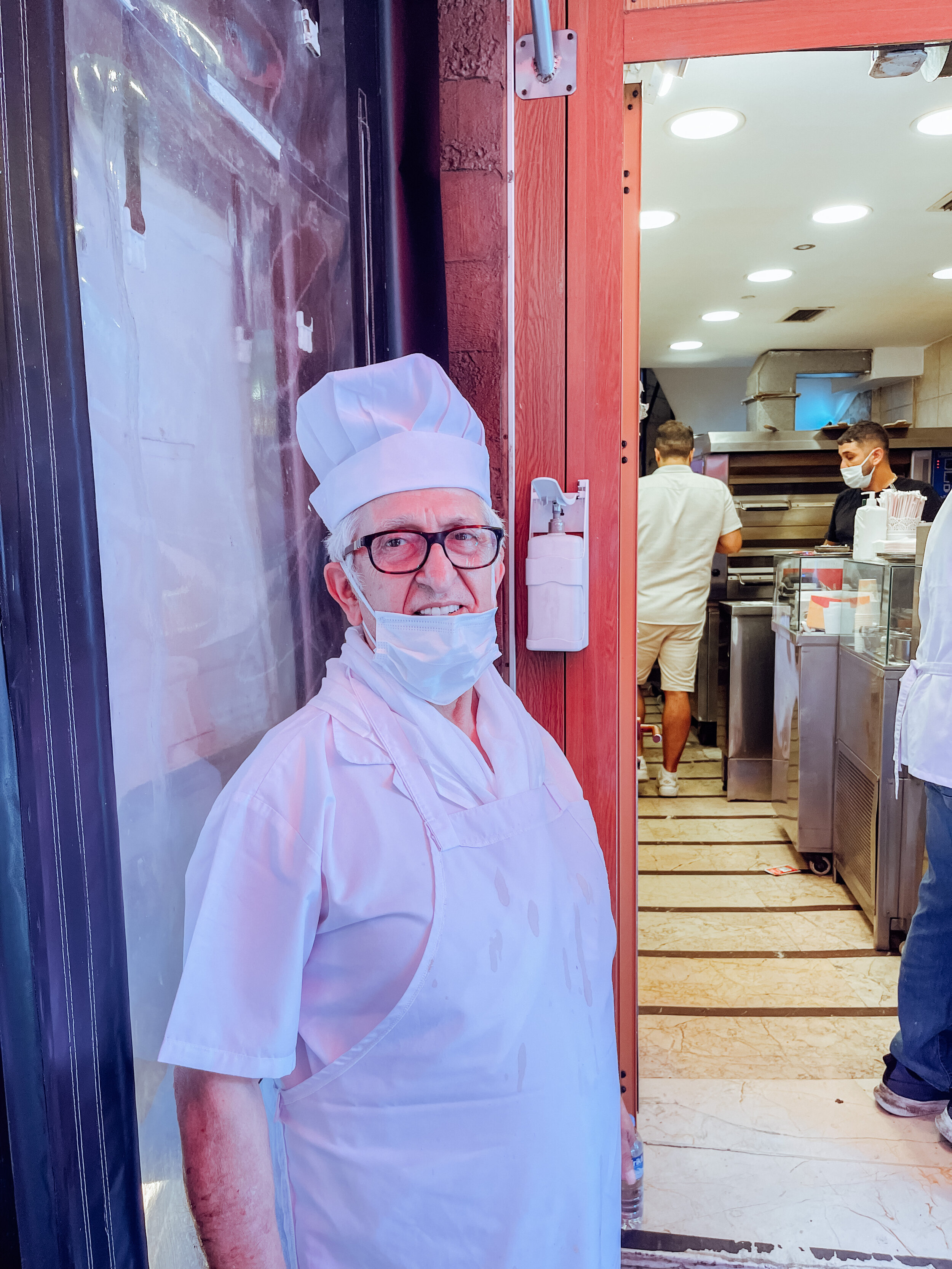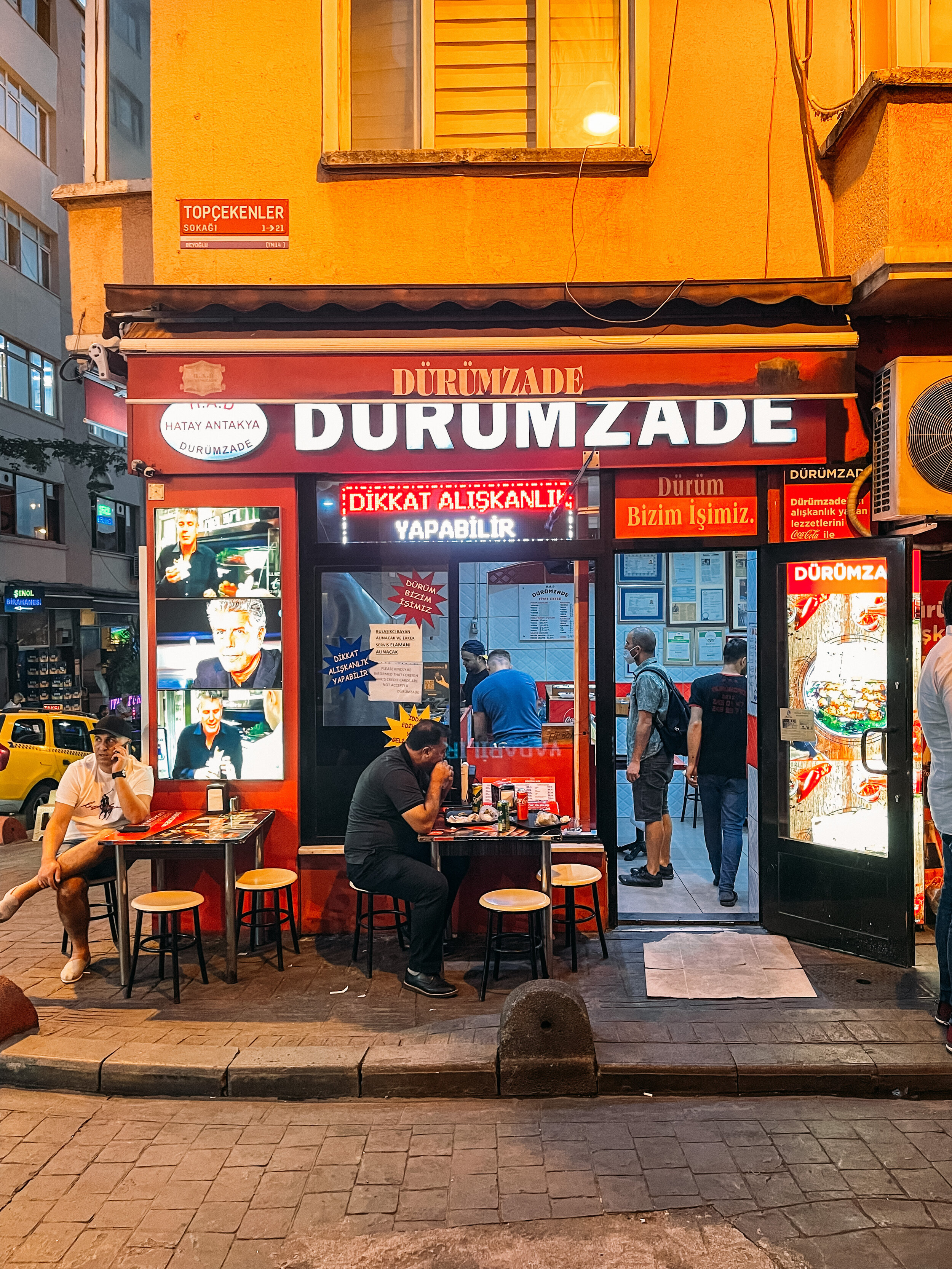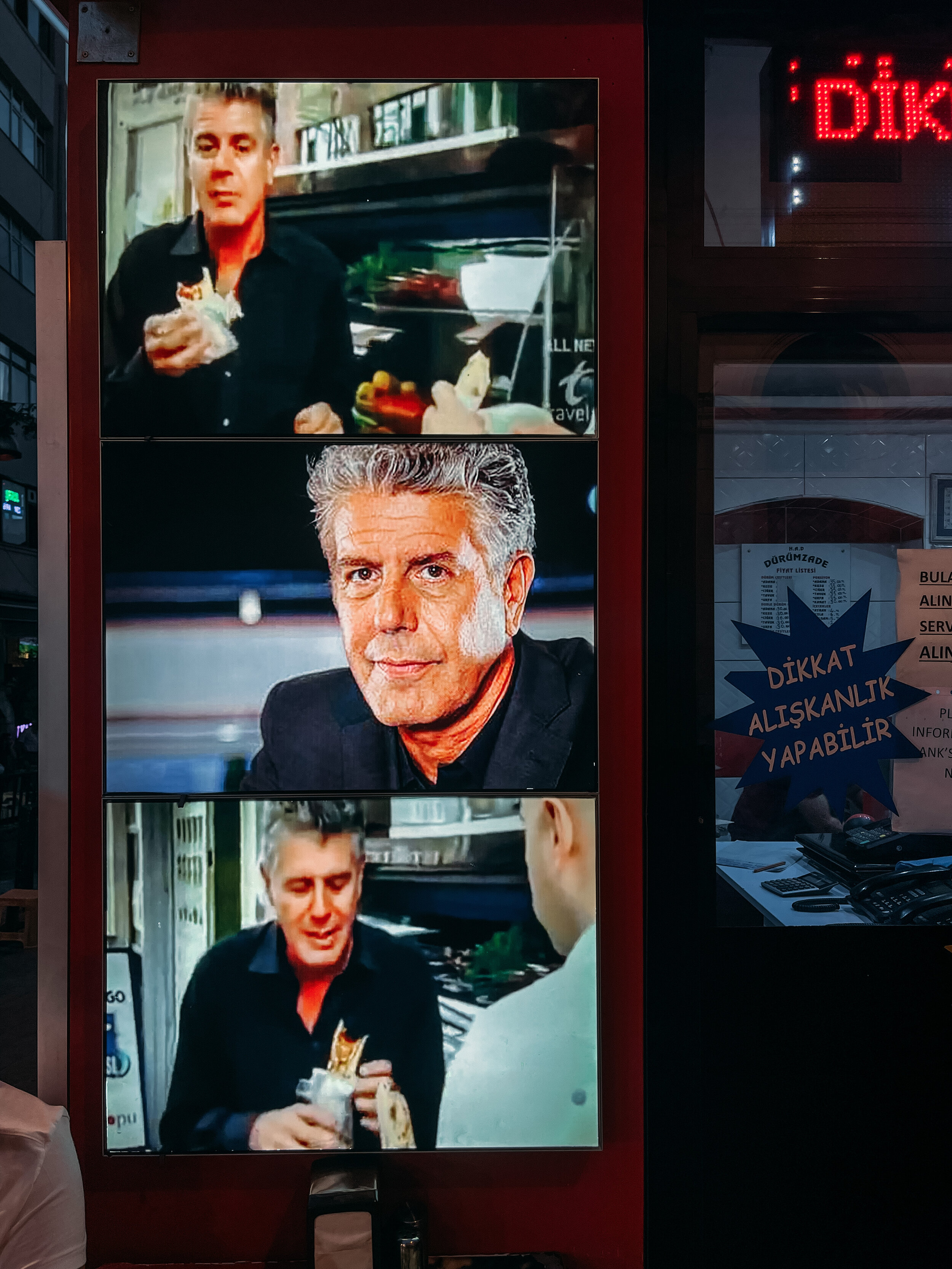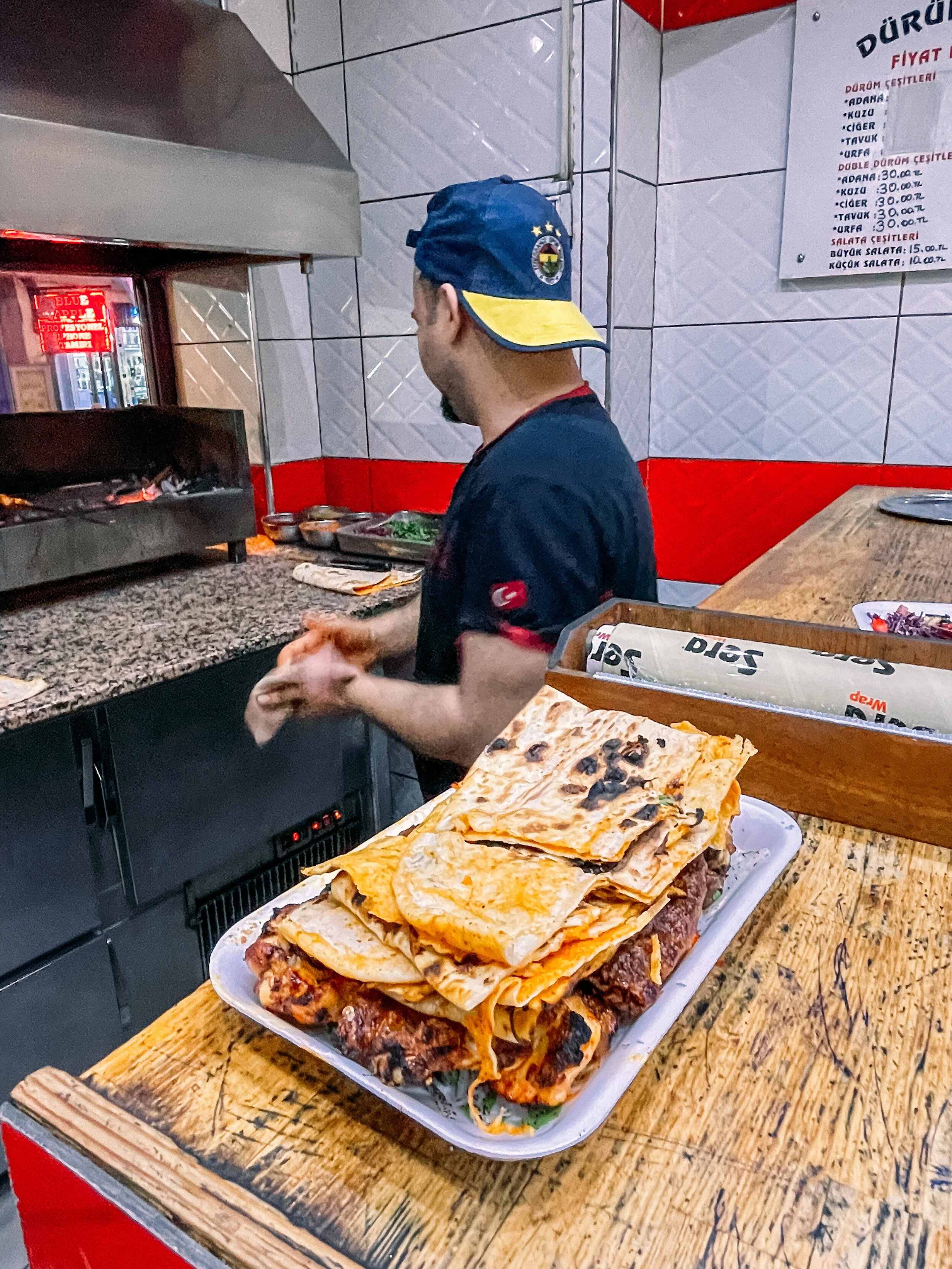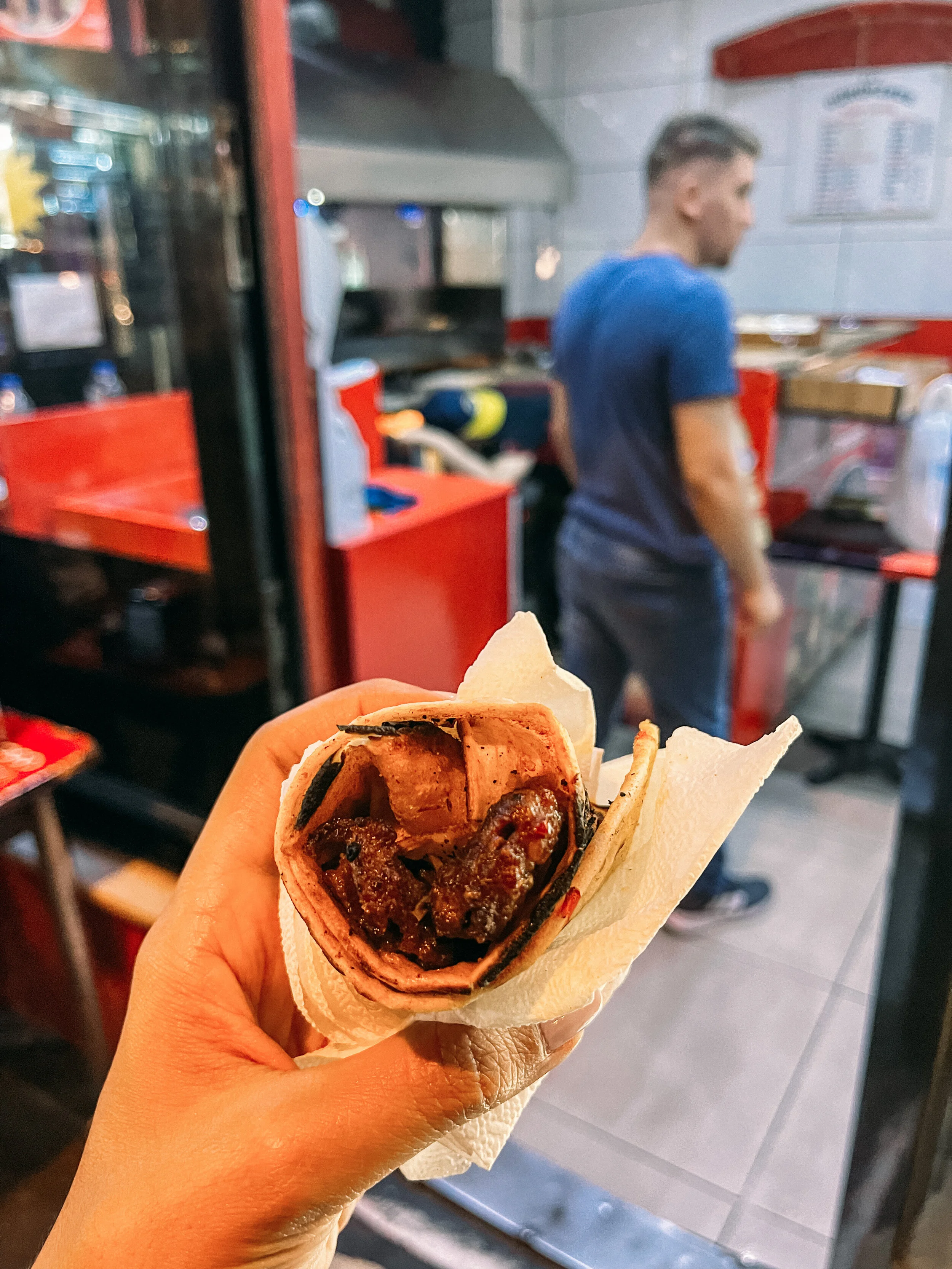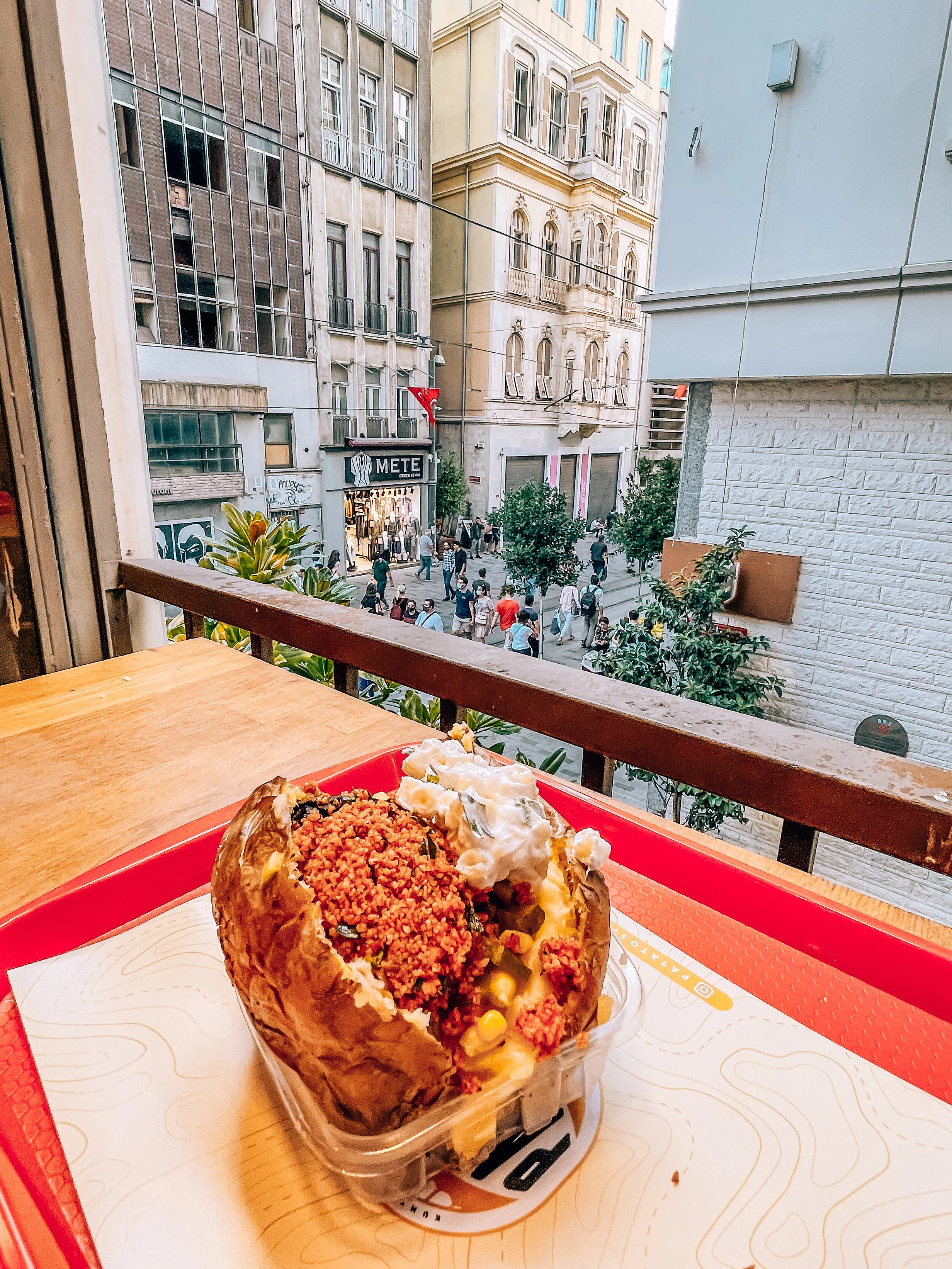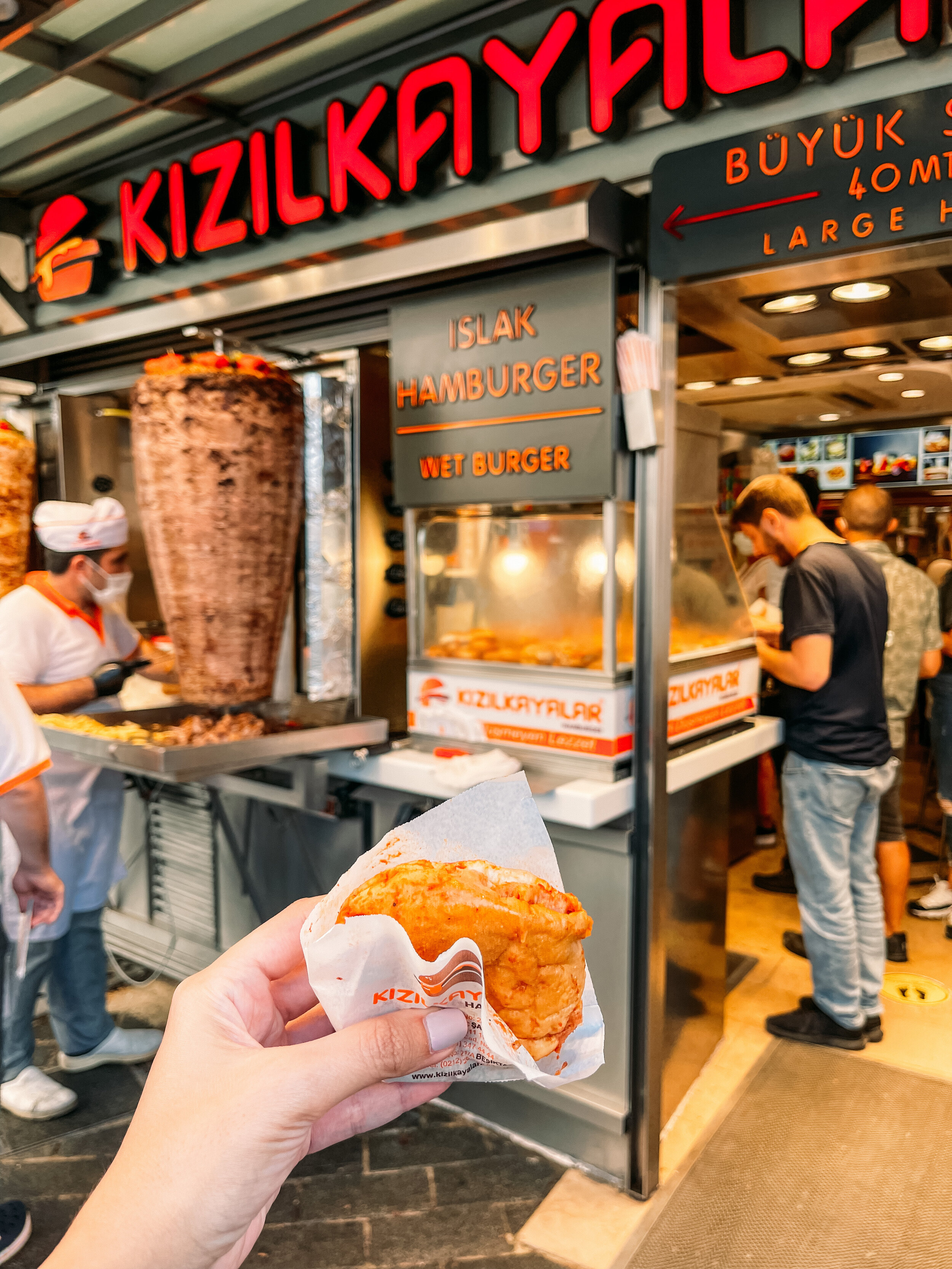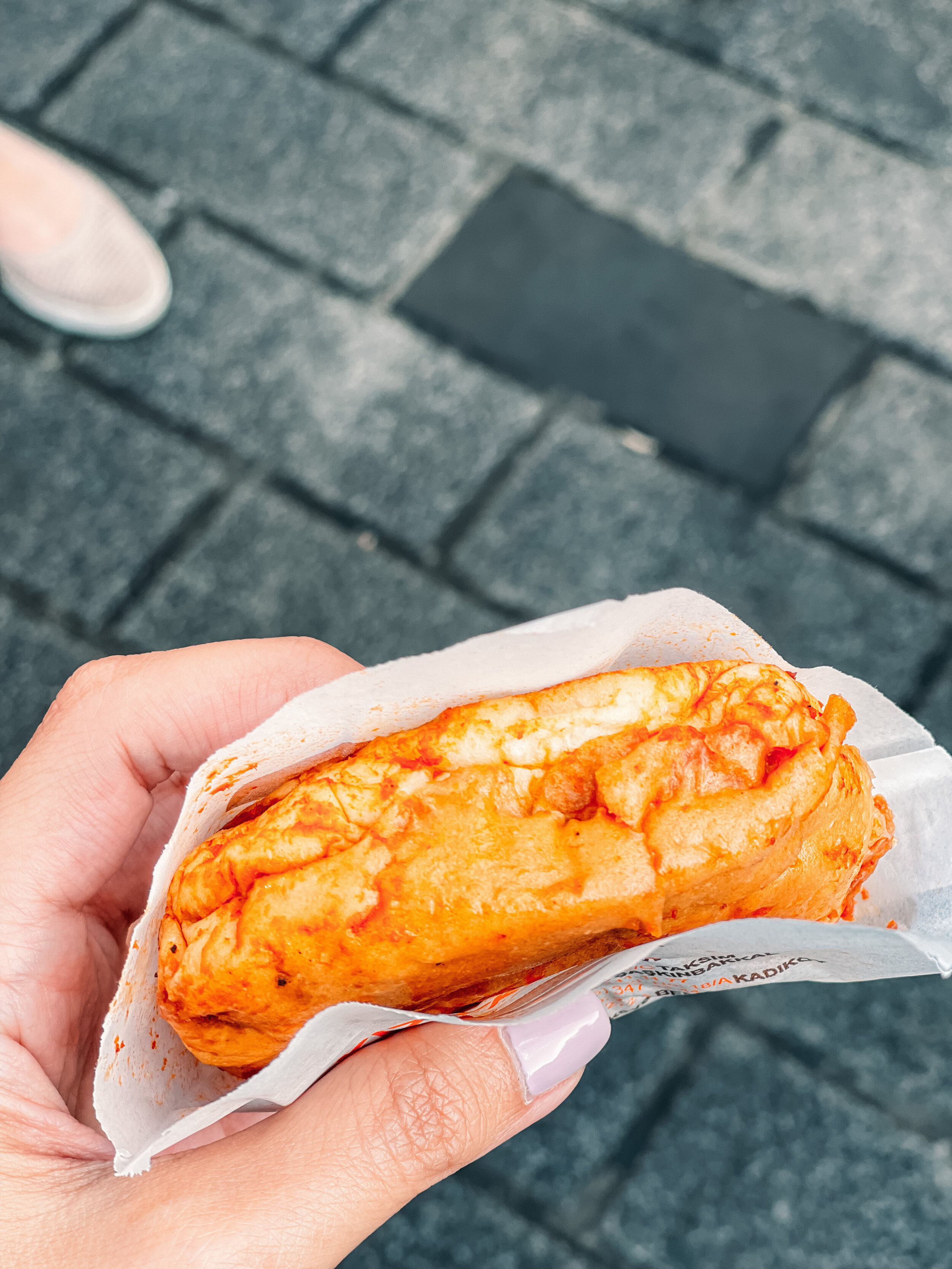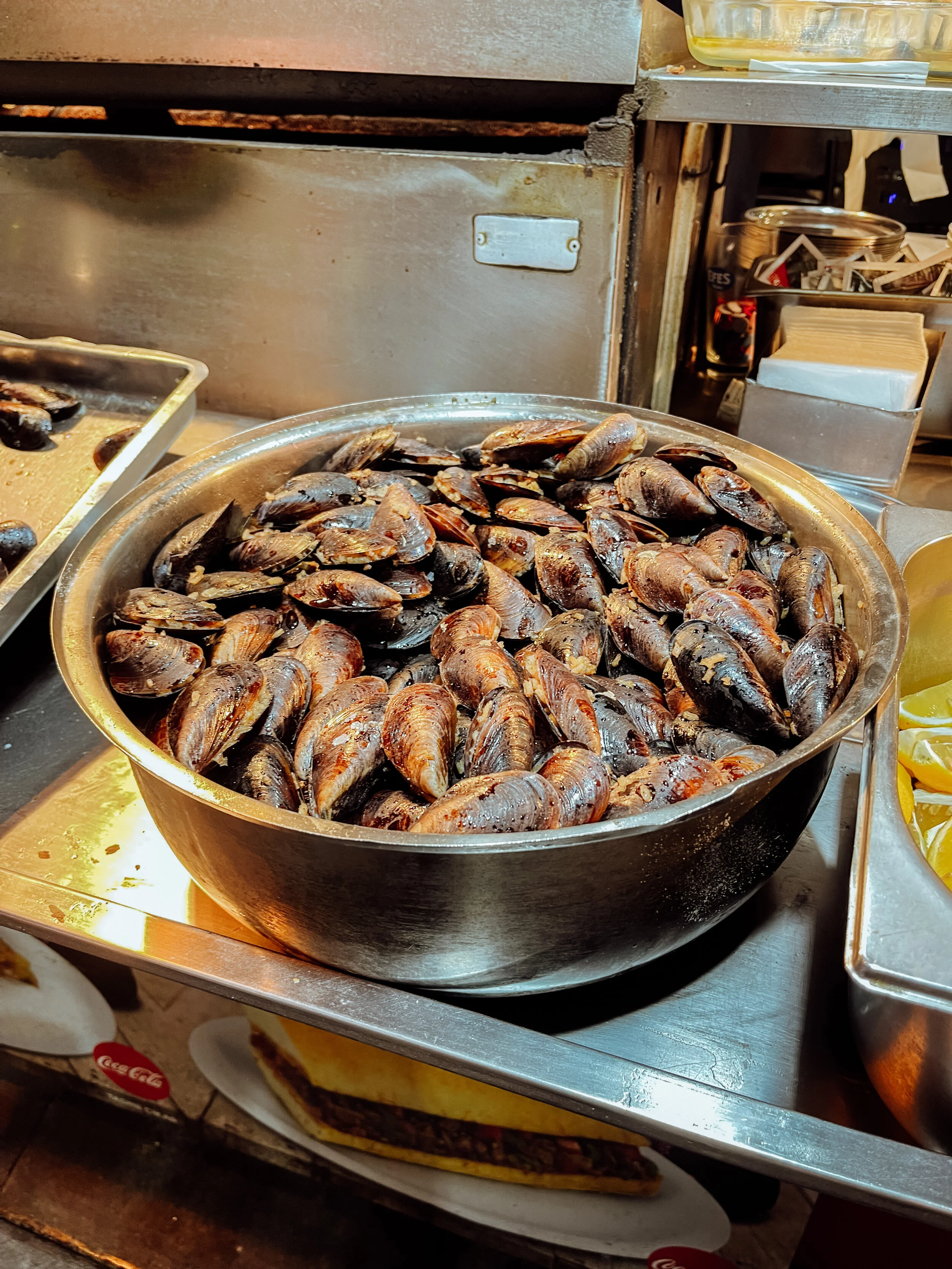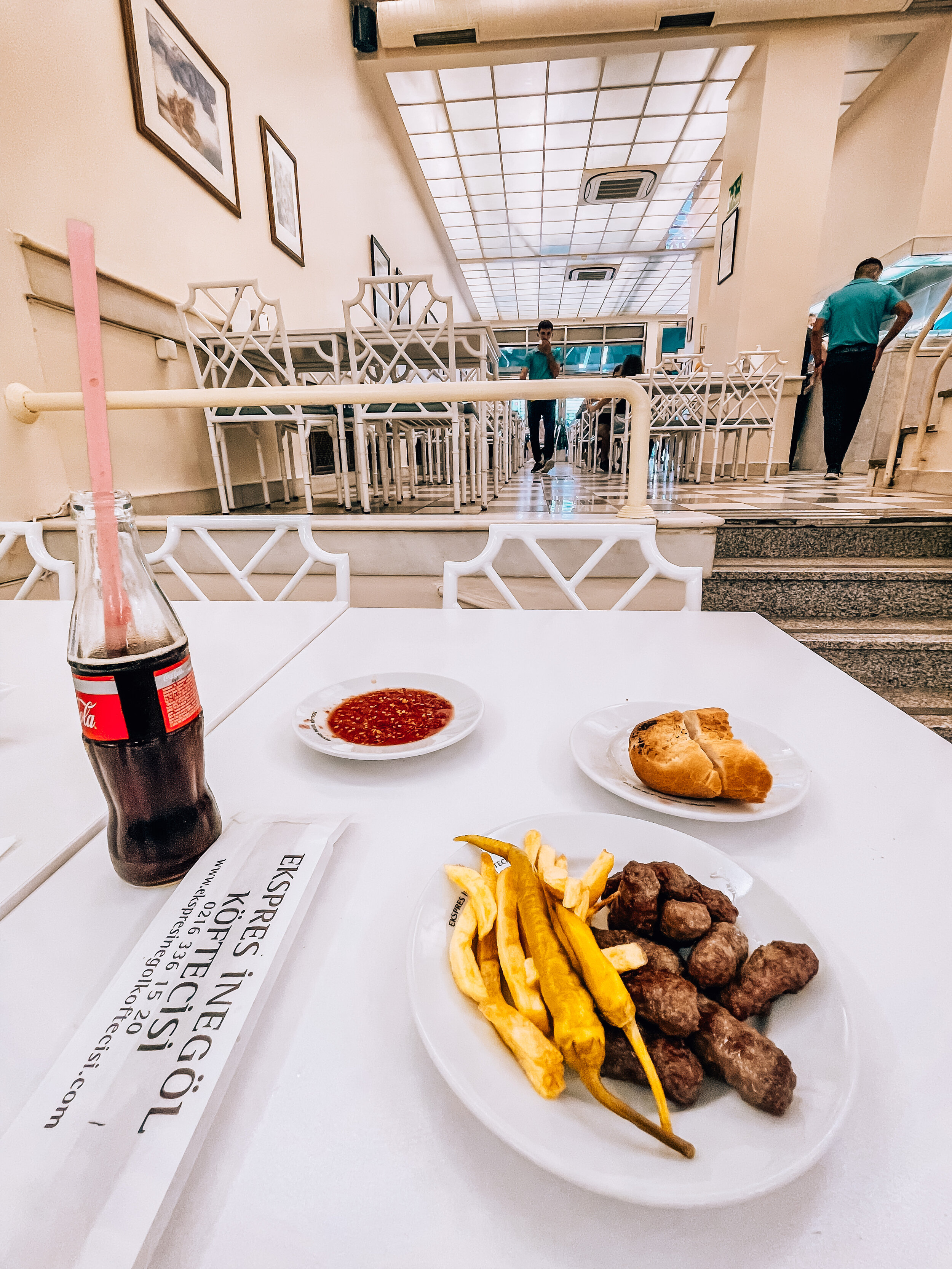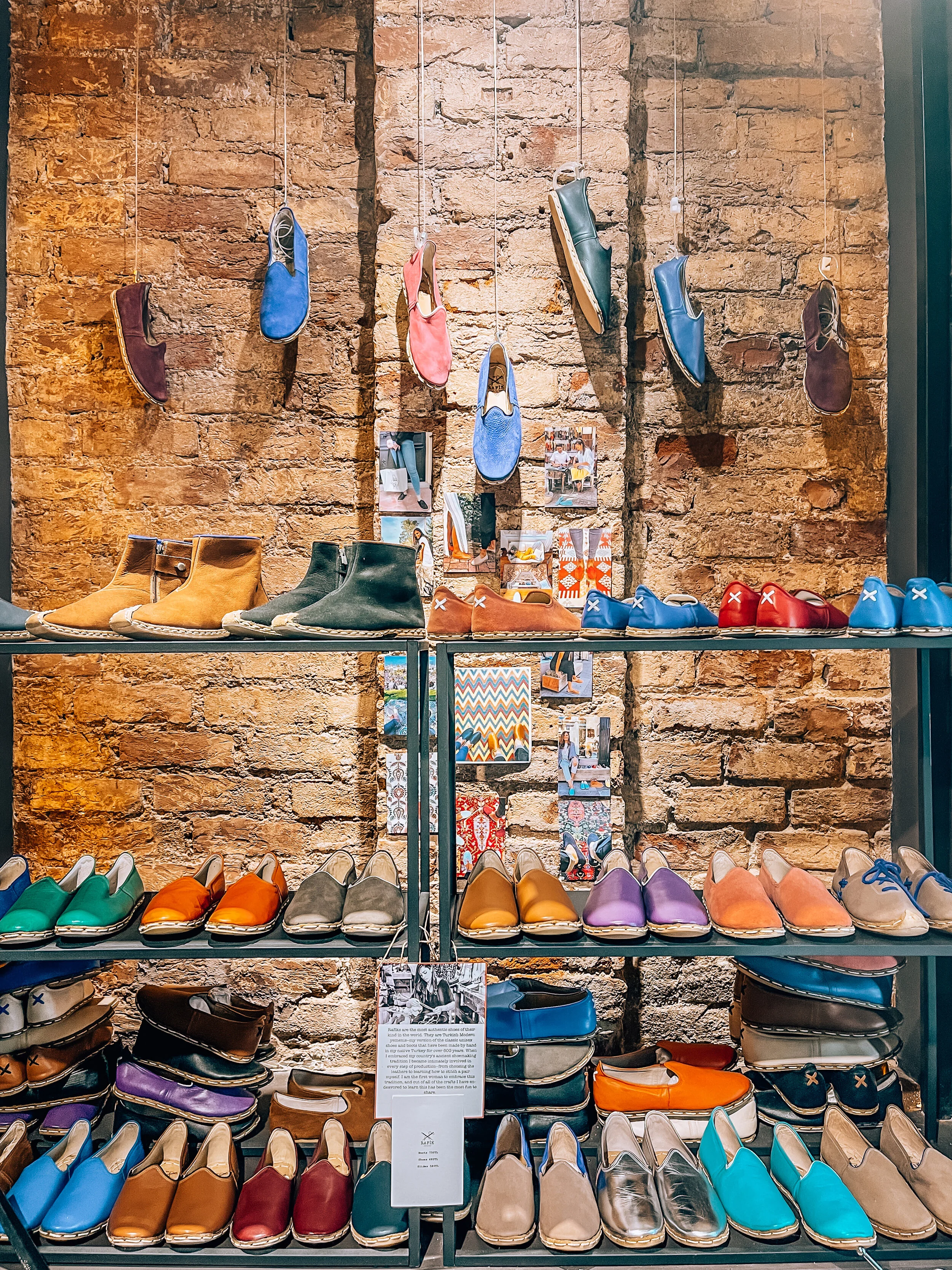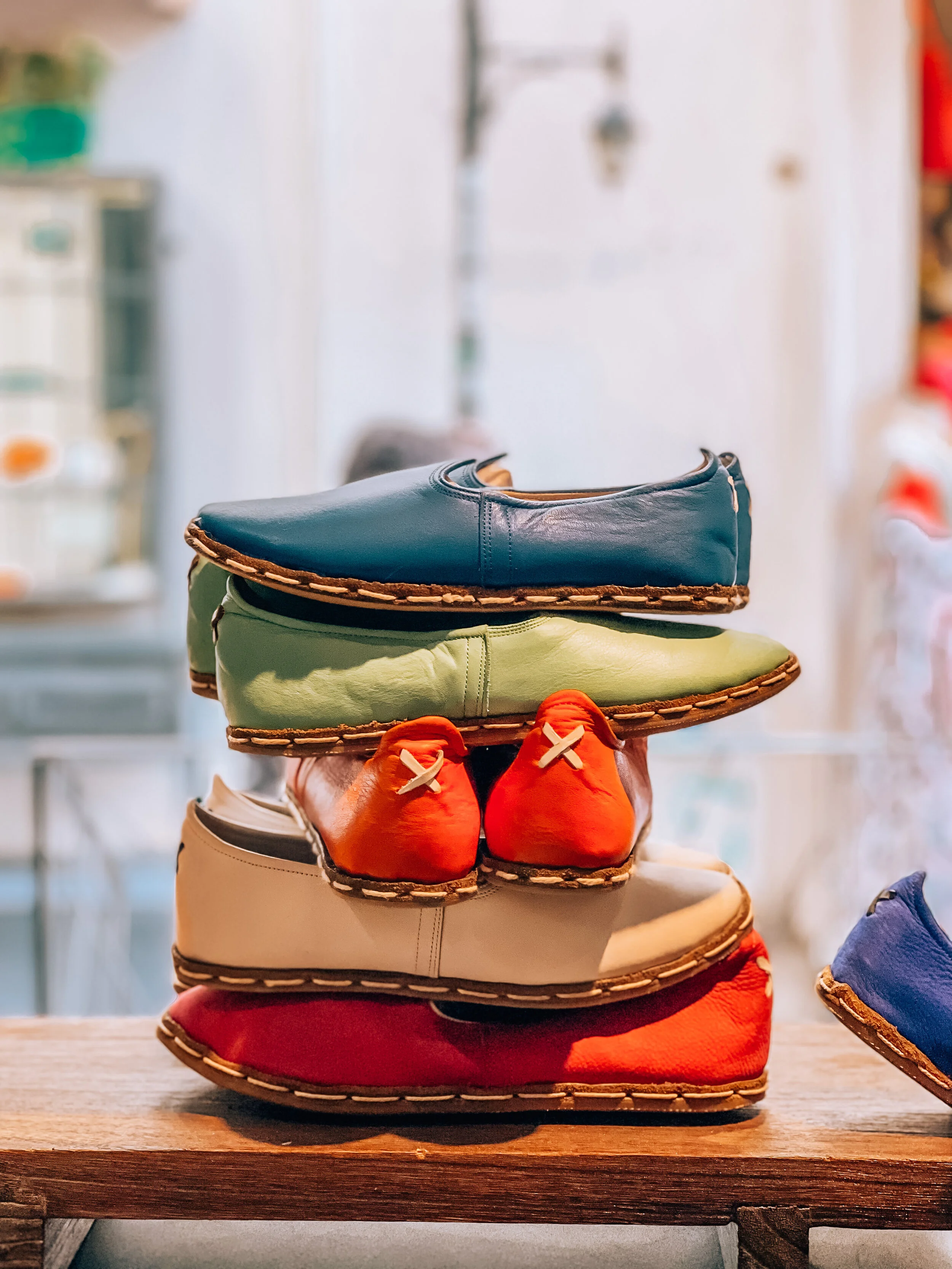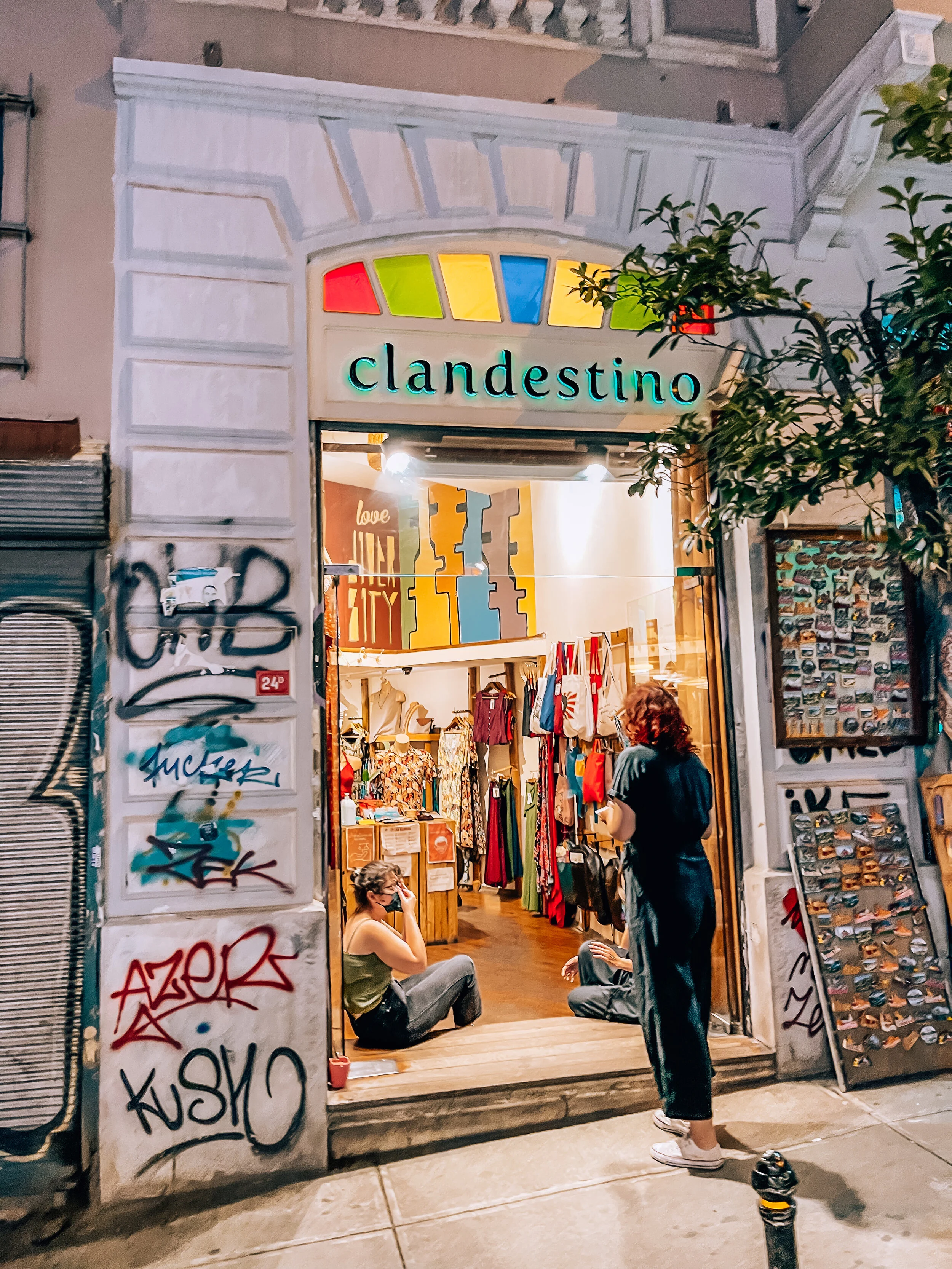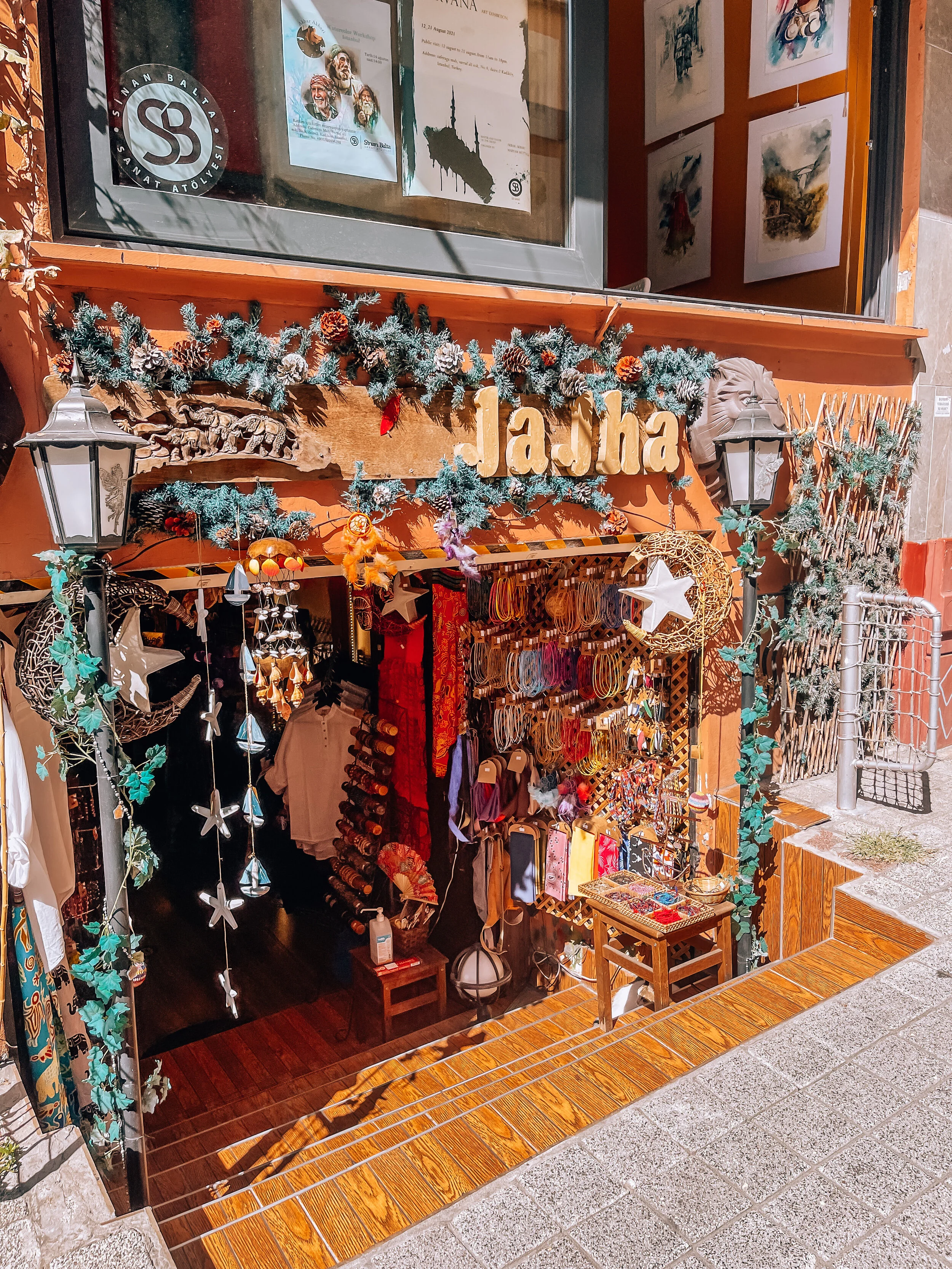Istanbul is simply breathtaking. It’s a must-visit destination hosting beautiful religious sites, colorful streets, historical bazaars, heavenly cuisine, and an endless number of cats. IMO, it’s not a city you can cover in 1 or 2 or even 3 days. The architecture alone is mind-blowing and can be easily gazed it for hours. In fact, I feel like I barely even scratched the surface. Come and wander in its narrow streets, sip on endless cups of Turkish tea, and discover an Istanbul that’s extraordinarily unique. Here’s my guide to visiting this ancient city.
FLYING TO ISTANBUL
Depending on your nationality, a visa may be required to enter Turkey. E-visas can be obtained upon application online, and visas on arrival are also available for certain nationalities. For more information, visit the Ministry of Foreign Affairs website via the link here.
Within the last 72 hours prior to travel, all passengers must complete a required form for ‘Entry to Turkey’ online via the link here. Upon submission of the form, an HES code will be created automatically based on the given information. Save the form and print a hard copy as you may have to show it at the borders upon entry, and later. It was required by my airline, hotel, and a few attractions and museums to enter.
PCR tests/Vaccinations:
For vaccinated passengers, you can present a vaccination certificate or card if you’ve completed both doses at least 14 days before arrival. A PCR test is not required for vaccinated passengers. My Sinopharm vaccine was accepted.
For non-vaccinated passengers, you’ll need to submit a -ve PCR test taken at most 72 hours before arrival in Turkey. I wanted to be on the safe side, so I also took a PCR test before flying, which was not required by my airline when I showed them the vaccination card first.
P.S: Rules and requirements may change, so always check official government websites for updates and confirm with your airline carrier.
TRANSPORT FROM & TO THE AIRPORT
When you arrive at the new Istanbul Airport (IST), there are several ways to get from the airport to your hotel and back, aside from using public transport.
Taxi: Available 24 hours a day, 7 days a week. There are 3 types: Orange C type taxis (most affordable), Blue D type taxis (more expensive), and Black Luxury E type taxis (most expensive). Fares depending on the destination district are available on the Istanbul Airport website here, and any bridge toll expenses may also be added.
Hotel Transfers: you can arrange to book private transfer services where you are greeted by an agent at the exit gate and escorted to the vehicle then followed by a hassle-free drive to the hotel’s entrance. The price I was quoted by my hotel was 49 Euros for one way up to 4 guests.
Istanbul Airport Taxis (my pick): a private transport company that I booked after reading about on TripAdvisor forums. You can easily book the return ride online via the website here, after which they’ll send you all the need-to-know details and you can pay the driver in person in cash. As soon as I exited the terminal, I found the driver with a signboard outside waiting, and we walked nearby towards the vehicle, a black luxury van which was probably too big for 1 person, but was a nice ride. The cost was 29 Euros for one way, which is equivalent to 300 Turkish Liras.
HOW TO GET AROUND
Walking: Istanbul is a very walkable city in most parts, and depending on your stamina. Highly recommend wandering about by foot to explore its streets and narrow alleys. I can’t stress enough the importance of wearing comfortable shoes. Although I had packed sandals, I stuck to my trainers the entire time.
Bus, tram, metro, and ferry: The entire time I spent in Istanbul, I didn’t use any taxis. The public transport system is pretty impressive, easy to navigate, clean, and safe. I bought an Istanbulkart which I reloaded with credit at the many top-up stations located near tram stations or metro. The card and the credit are both nonrefundable so don’t put too much credit on it incase you don’t use it or incase you misplace it. You can buy the card at the airport, or at kiosks near the stations. There are many stalls that also sell 1, 2, or 3 ‘kullanimlik pass(es)’ that you can use 1, 2, or 3 times. Buses do not accept cash, so having the card is the best option. Also, the machines to top up thankfully do have an English option so you can switch to that. When in doubt, I would always ask the security officers nearby, or the many volunteers dressed in blue polo shirts that have ‘Ask me’ printed on the back.
Taxis: All taxis should have running meters. If the driver doesn’t start the meter, ask them to. Some might say there’s a flat rate which shouldn’t be the case. If they refuse, simple. Get out.
UBER: According to UBER, they operate in Istanbul and Ankara only; however, the website for Turkey appears to be down which suggests they may not be operating there anymore. From what I understood from my hotel, UBER has a partnership with the yellow taxi company which you can attempt to book via the app.
iTaksi and BiTaksi: Apparently, both iTaksi and BiTaksi are local alternatives to UBER that match you via app with nearby drivers. Haven’t tried either but well worth researching if you intend to use taxis.
WHERE TO STAY
First of all, my recommendation would be to stay in the European side of Istanbul. Based on my thorough research, the 2 best districts to stay in are Beyoğlu and Sultanahmet, the latter being closer to the bazaars and mosques; therefore, very touristy. In Beyoğlu, I had to make the decision to either stay closer to Taksim Square which is a part of the city that seemingly never sleeps, or near Galata Tower. I chose near Galata Tower as it's somewhat of a midpoint between the 2 areas (Sultanahmet and Taksim).
Hotel DeCamondo was a fantastic choice with glowing reviews, located just a few minutes walk to the Galata Tower and about a 7 min walk to the tram line. It’s a former home turned boutique hotel, and is beautifully designed with woodwork everywhere. One of many highlights of this place is the rooftop lounge where you also have breakfast. It's a spacious deck with unbeatable views of the city’s skyline, and serves delicious food. Also worth noting are the wonderful staff who are incredibly friendly and helpful.
WHAT TO SEE & DO
Hagia Sophia: The architecturally stunning Hagia Sophia that stands today (3rd one after the first 2 were burned down) was built in the 6th century by the Roman Emperor Justinian as a cathedral, believed to be the world’s largest church at the time. It became a mosque in 1453 with the Ottoman conquest of Constantinople (now Istanbul) and was later converted into a museum in 1934 in a drive to make Turkey more secular. In 2020, the Hagia Sophia was turned back into a mosque, and is still open for all visitors. Absolutely beautiful.
Süleymaniye Mosque: The Süleymaniye Mosque was built between 1550 and 1557 by the one of the most famous architects, Mimar Sinan, for Kanuni Sultan Suleyman ‘The Magnificent’ on 1 of the 7 beautiful hills of Istanbul. It is just stunning, and relatively visitor-free compared to the Hagia Sophia. The mosque has 4 minarets with 10 balconies, which are said to represent the fact that Suleyman was the 10th Sultan of the Ottoman Empire. After wandering about the surrounding garden, I put my scarf on, entered the mosque, and in all seriousness, stood transfixed by its beauty. Every corner of the interior is decorated with items such as stained-glass windows, Iznik tiles, calligraphy, a ring of lights, and an orange-red carpet to name a few. The building also houses a medreses (place to study), a soup kitchen, a hospital, a hospice, & a Turkish bath. The founder Süleyman, his wife Haseki Hürrem Sultan (Roxelana), and the architect Mimar Sinan, are buried in the graveyard by the mosque.
There are many other mosques and churches in Istanbul that you can visit. Here’s a guide to the most beautiful religious monuments.
Topkapi Palace: Mehmet the Conqueror ordered the building of the 1st stage of the palace shortly after he had conquered Constantinople from the Byzantine empire in 1453 at the age of 20. It became the home of the Ottoman sultans & their court for nearly 400 yrs of their 600 yr reign, before moving to other palaces by the Bosphorus. A visit to the Topkapi Palace is a fantastic glimpse into the lives of the sultans and the palace’s almost 4000 inhabitants.
Tip: Carry an I.D with you to be able to rent the audio guides.
Theodosius Cistern: Over 1600 yrs old, built by the Byzantines and further developed by the Ottoman Empire, the Theodosius Cistern is a part of Istanbul’s ancient water system. It is located underground & connected to other cisterns, crucial as it provided the city with drinkable water.
Grand Bazaar: The Grand Bazaar is a labyrinth of narrow covered lanes filled with thousands of shops selling jewelry, antiques, clothing, souvenirs, and much more. The marketplace was originally built in the 15th century for merchants to sell their goods and dedicate a part of the profit for the Hagia Sofia Mosque. If you do enter undeterred by the crowds, you can get your hands on pretty cool items and great deals at a fraction of the retail price subject to your bargaining skills. When wandering, make sure to venture to the less traveled corners to see artisans at work and enjoy the banter of its merchants.
Spice Bazaar: The Spice Bazaar was built in the 1660s and is also known as the Egyptian Bazaar because it was built with revenues from the Ottoman eyalet of Egypt. This market is probably the 2nd most famous, second only to the Grand Bazaar. The second you enter, you’ll be distracted by the scent of its exotic spices, and the rich blend of its colors. The shops also offer a variety of dried fruits, dates, nuts, cheeses, sausages, and what seems like copious amounts of Turkish delight.
Galata Tower: Galata Tower in Istanbul is considered among the oldest towers in the world, first built by the Byzantine Emperor Anastasius in the 6th century. It’s now a museum with an observation balcony that you can get to, probably while huffing and puffing, where you can see jaw-dropping views of the city.
Istiklal Caddesi and Taksim Square: Probably the busiest 2 areas I’ve seen in all of Istanbul. Istiklal Street which runs from Taksim Square all the way up to Galata Tower is lined with 19th century buildings housing retail shops, restaurants, cafes, museums, and more. Lovely area to just stroll by and admire the buildings. Pop by the St. Antoine Church if you get a chance. There’s a red tram that runs through the street as well which would make for a scenic trip. At night, the city is buzzing and the street gets insanely packed with people, musicians, and performers. Check out Nevizade Street and Cicek Pasaji for dinner and drinks. Taksim Square is the beating heart of Istanbul and probably the one part of the city that never sleeps. It’s loud and busy, and filled with shops all over. Here’s where you’ll get to try the ‘wet burger’ - more on that below. From Taksim, walk nearby to Cukurcuma, a lovely neighborhood filled with antiques and vintage retail stores.
Asian side of the city: Kadikoy, Moda, Baghdad Street: While I absolutely loved the European side of the city, I was far more enthralled by the Asian side. Getting there involves a scenic 20 min ferry ride or 5 min trip by train. I opted for the ferry most times and enjoyed the gorgeous views and sound of the waves crashing while sitting on the sides of the deck. A walking distance from the ferry station is the Kadikoy Produce Market which is this incredibly colorful bazaar of its own, selling everything from fish to enormous vine lines to pickle juice. I would highly recommend trying the pickle juice, apparently a cure for severe headaches (probably hangovers), and is unexpectedly delicious. There are many cool cafes, restaurants, and shops in this Kadikoy neighborhood so going in with no agenda is probably the way I’d go about it. A favorite spot I stumbled into was a huge book hall, 2 or 3 stories, on Neşet Ömer Street where shops sell thousands of books, mostly in Turkish, but with English books as well. If you’re a literary buff, you’ll love wandering in here and picking up some classics or contemporary novels. Moda is a hip side of town with cool cafes and bars to check out. There’s a touristy tram line that runs on the main road so it’s an easy trail to follow. Further up is probably the most popular shopping street on the Asian side, Baghdad Street, which was described to me as the Champs Elysees of Istanbul. Plenty of luxury brand names and international chains, and also a few Turkish stores worth checking out if you’d like to shop – more below.
P.S: A few tips to keep in mind. 1) Ladies, when visiting religious sites, bring a scarf to cover your hair & avoid shorts (same for gents). 2) Carry a small bag to store your shoes as no shoes are allowed inside religious sites. 3) The Blue Mosque was under massive restoration when I visited in Aug 2021 so I couldn’t really see anything inside. 4) The lines to enter the Hagia Sophia and the Topkapi Palace can be super long midday onwards. Arrive early. 5) Certain mosques only open for tourists at specific timings, outside of prayer times. Check ahead online or call. Also, keep in mind that prayers on Fridays are usually longer.
WHERE TO EAT
Istanbul on Food Tours: I’m in the wandering business and there’s no better way to get a real feel for the city than with its trusted locals. I booked 2 tours with Istanbul on Food which were fantastic, particularly the ‘Taste of 2 Continents’ tour with Aysha. We covered SO much ground, not just keeping our mouths full, but also exploring her favorite parts of the city, hearing anecdotes, and learning tidbits about the city’s history and culture. So I’d highly recommend booking a tour that she’s covering.
Karadeniz Doner Asim Usta: The doner kebap from Karadeniz Doner Asim Usta was delicious. Rumored to be the best doner spot in the city, I made my way there early at 12ish to avoid the crowds I was forewarned about, but luckily didn’t have to wait at all. First thing you’ll see is a ginormous kebap rotating around the spit luring customers in like magic by wafting that scent of delicious roasted meat in the air. I opted for the kebap in pide bread which arrived packed with tomato slices, green capsicum, and pickles. The pide was not as thick as others I’ve tried which I’m thankful for, as I could have easily had a second. The place has minimal seating inside, but comfortable enough stools outside to just sit and dig your teeth into that doner, paired with Ayran, a salty yoghurt drink.
Durum from Dürümzade, hailed by Anthony Bourdain as ‘absolutely f***ing delicious’, was on my list of bites to try after watching his episode in Istanbul. Luckily, this happened to be a food stop on my Taksim Evening Tour with Istanbul Food. The masterchefs behind the place add red chili oil to the bread and let it soak up all the meat juices while grilling. The durum was out of this world.
Kumpir is a baked potato cut open, mashed with butter and grated cheese, and a party of fillings inside. There are several places that sell ONLY potatoes so you can imagine how popular this is. The fun is in watching the staff slice the potato right open, add spoonfuls of butter and grated cheese, and then pile the toppings you choose from the bar. Best one I’ve had was at Granny’s Waffles & Kumpir in Moda, Asian side of Istanbul. It’s apparently also very popular in Ortakoy.
Kızılkayalar Hamburger: Heard of Istanbul’s wet burger?! The name alone piqued my curiosity. An Islak hamburger a.k.a ‘wet burger’ was reportedly created by the Kızılkayalar family. Their secret? A special wet hamburger sauce, the recipe of which is guarded, which is poured on the bread & meat soaking it. The burgers are piled high & stocked into a steam chamber, pretty much a Turkish hammam. There were no extras in the bun e.g. no cheese, no lettuce, no pickles - just meat in a wet, sauced up garlic-tomato bun. As soggy as it looked, surprising delicious. Apparently very popular after a night out.
Midye Dolma: Practically everywhere in Istanbul, you’ll find stuffed mussels. A lot of restaurants offer them on their storefronts, but more often, you’ll find men selling them on the streets (illegally apparently) . Given it is unrefrigerated seafood, best be careful. The mussels are stuffed with rice, spices, and raisins and there’s a simple procedure to eating them with your hands. The server will slide the top shell off, revealing the mussel with rice filling, and use it as a spoon to scoop the mixture out of the bottom shell. After he squeezes a generous amount of lemon all over it, he’ll hand it back to you to devour in one bite. It’s a magical combination and insanely good. There’s apparently a fried version of mussels as well and others served with hot sauce.
Ekspres İnegöl Köftecisi: Wandering with Turkish friends in Kadikoy, they pointed this place out to me and mentioned that they had grown up eating there and that the place had only had a few things on the menu which they did exceptionally well. So after walking many uphill roads, I was famished and miraculously found myself outside their door. I ordered the first thing I saw on the menu ‘Inegol Kofte’ meatballs and lentil soup. When it was served, I was amazed by the mountain of bread they placed on the table which I guess many people eat with their food, but I didn’t want it to go to waste, so sent back about 95% which I’m sure raised a few eyebrows. The soup and the meatballs were phenomenal putting, dare I say it, IKEA’s to shame. The place is nothing fancy, just great food at a great price.
I tried a few fine dining options but can’t say they were anything special, neither was the service. I personally enjoyed the street food and local casual eateries way better.
Other recommendations from friends and hotel staff that I haven’t tried and tested (yet):
Ali Ocakbasi, Duble Meze Karakoy, Mikla, Murver, Munferit, Namli Gurmet, Neo Lokal, Park Fora, Madam Nica, Atlas Muhurdar 78, Tarihi Pide Firini, Lokma, Hatay, Pandeli Restaurant Misir Carsisi, Sunset Bar & Grill.
WHERE TO SHOP
I’m pretty sure I barely scratched the surface when it comes to shopping in Istanbul. But I wasn’t there to shop really, so all the places listed below, I luckily discovered while wandering about. I came across gorgeous dresses, jewelry, robes, and shoes that I loved and probably wouldn’t find in Dubai (at least not with the same price tags).
Grand Bazaar: for souvenirs. Coasters, lamps, and home decor items.
Turkish Modern: they have beautiful rafik leather shoes, made based on an ancient Turkish shoemaking tradition.
Yargici: loved the sandals and shoes here.
Clandestino: loved the bohemian style clothing and jewelry.
Jajha: also nice bohemian style bags and jewelry.
Atlas Campus: cute dresses and tops.
adL: Although we have this store in Dubai, their collection in Istanbul is far nicer. Worth checking out.
Many accessories stores with colorful necklaces, bracelets, and anklets. Some are better quality than others!

